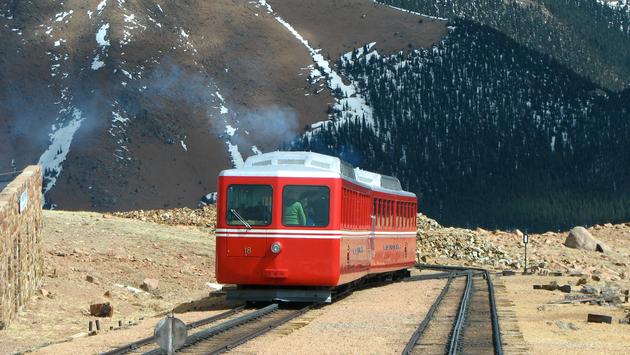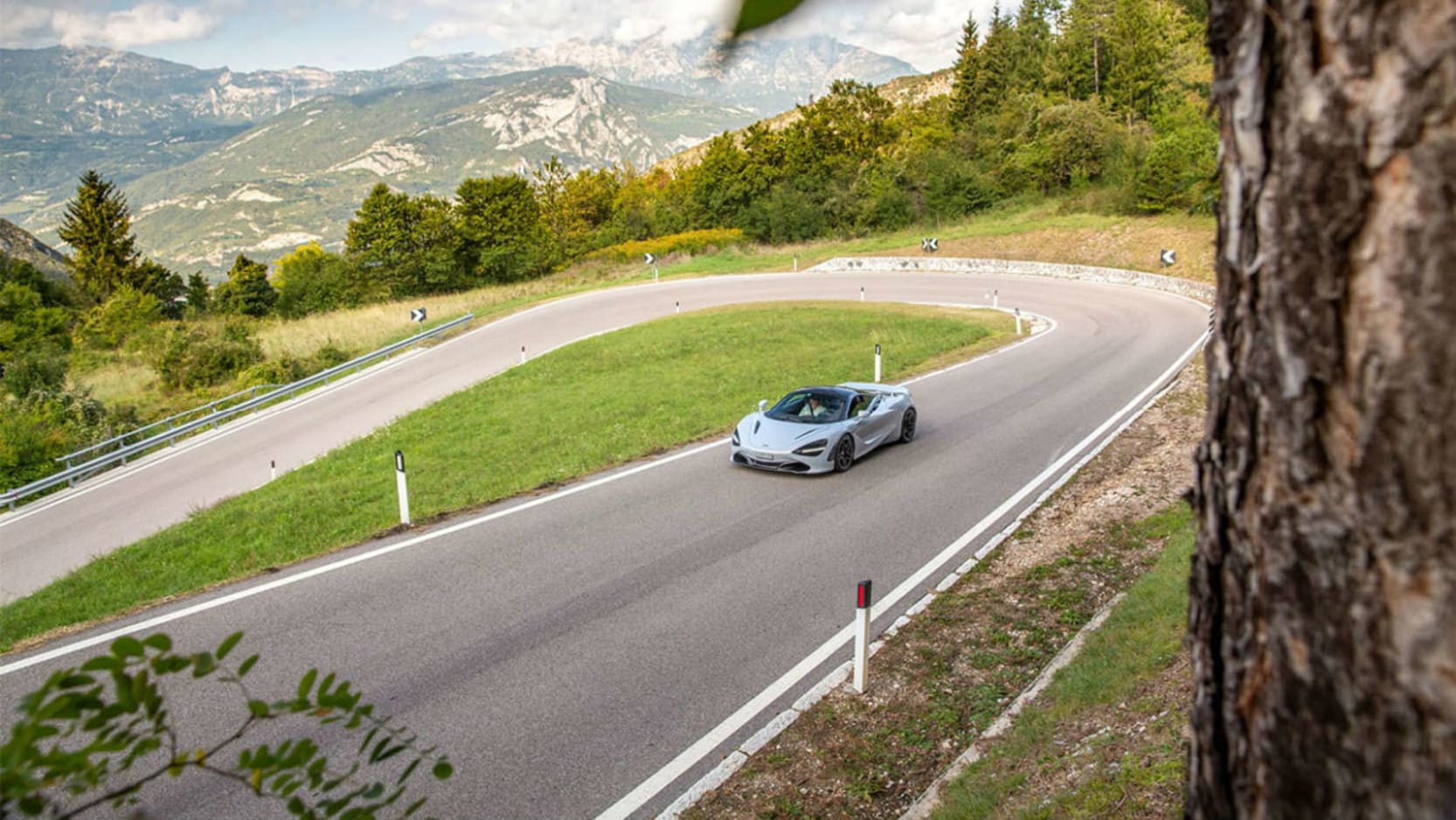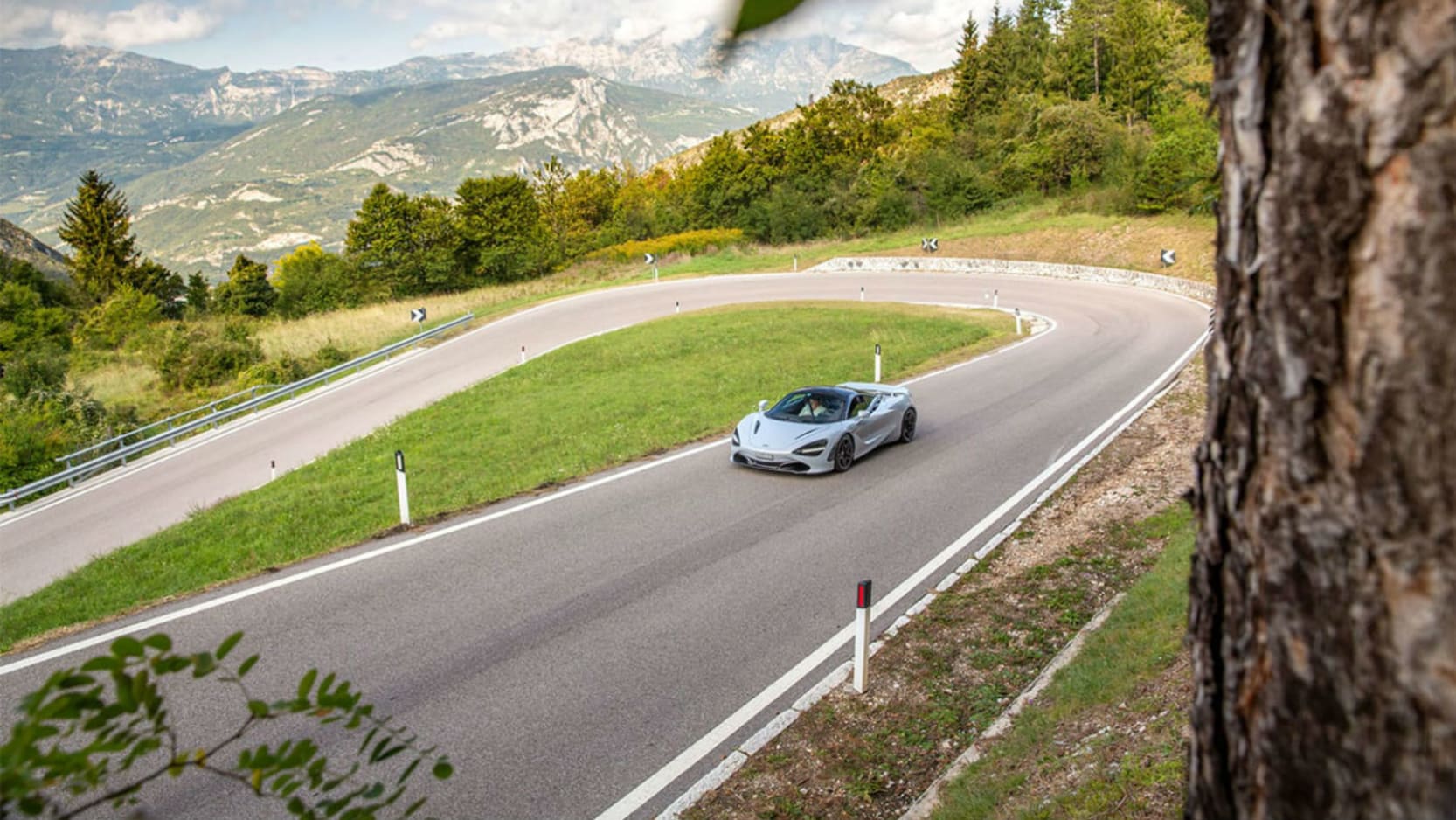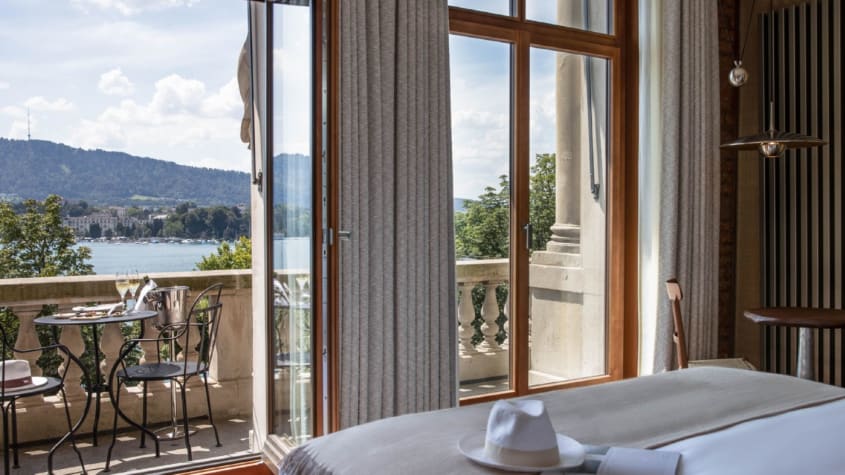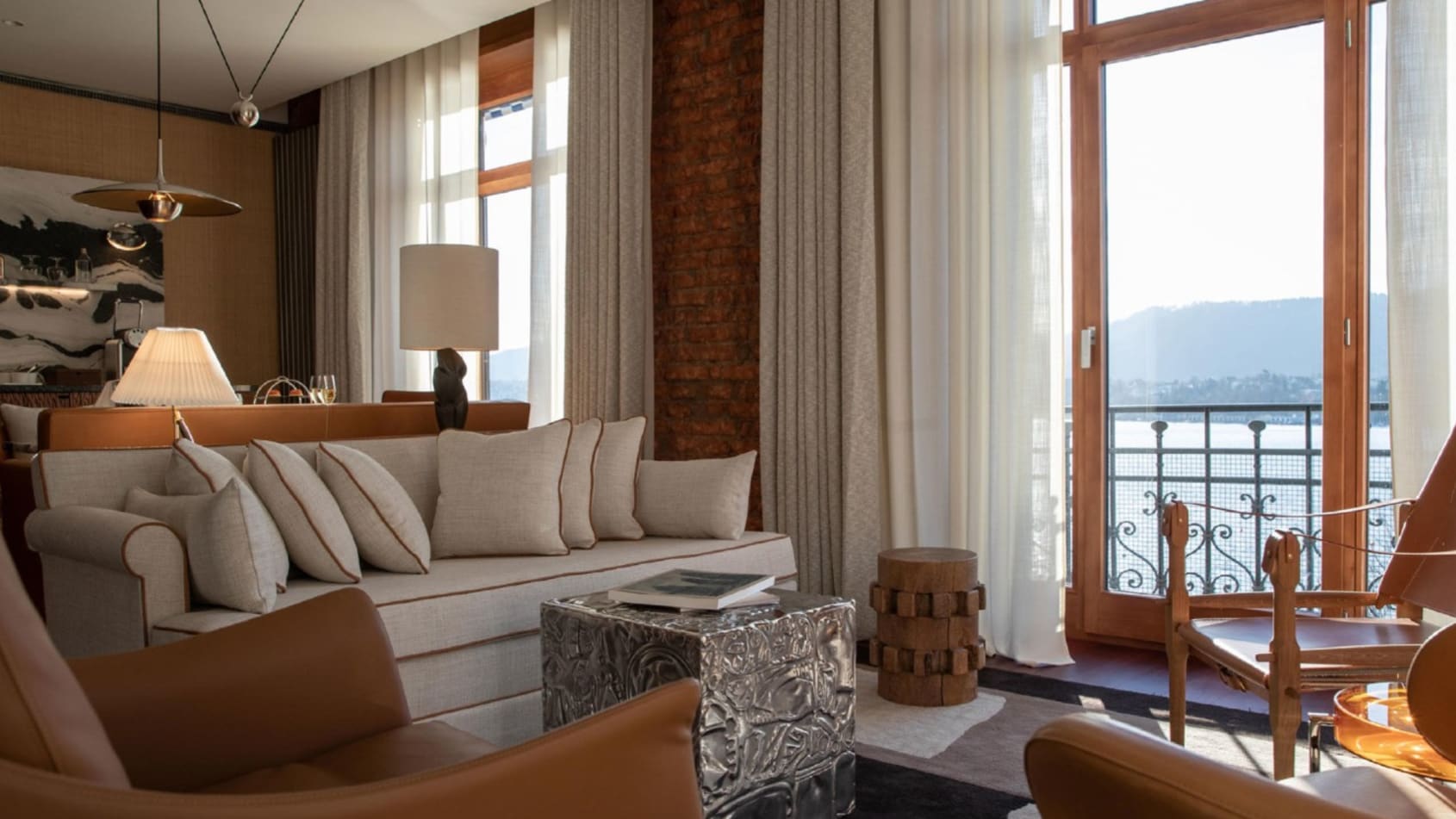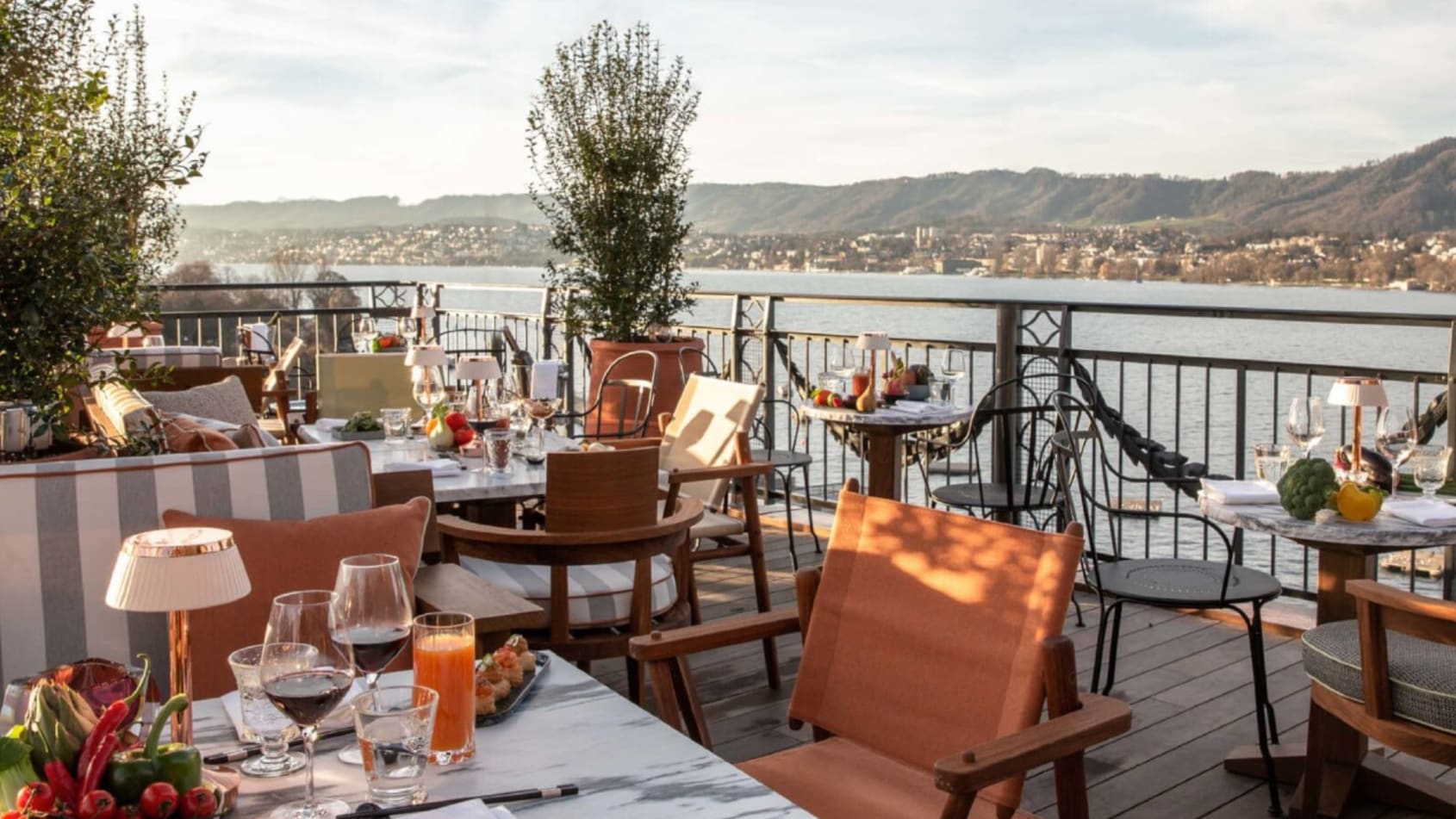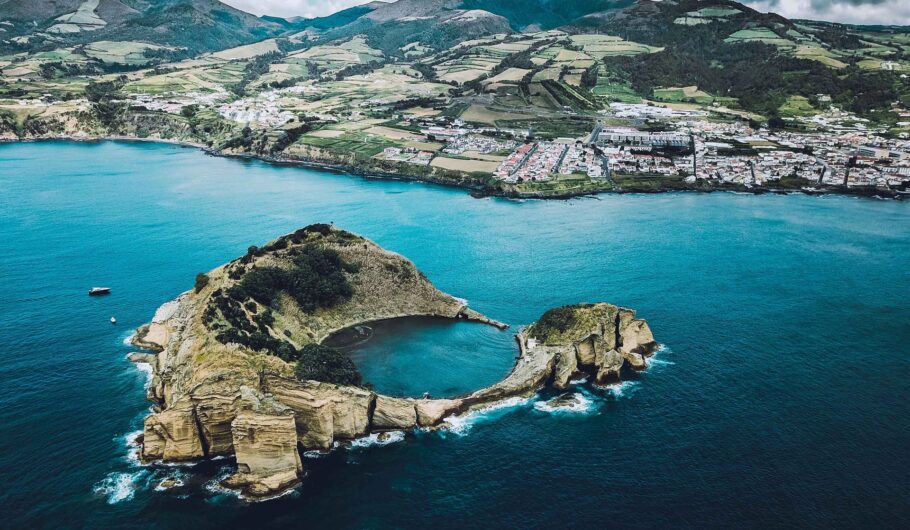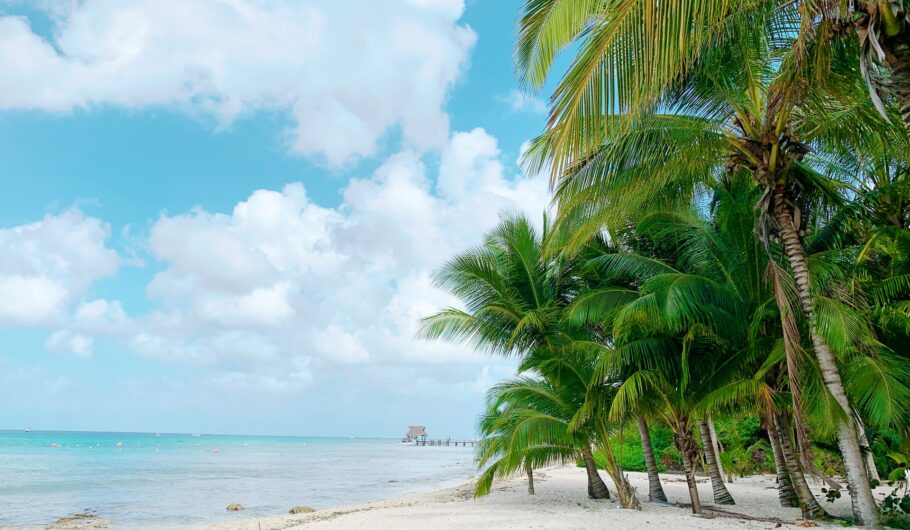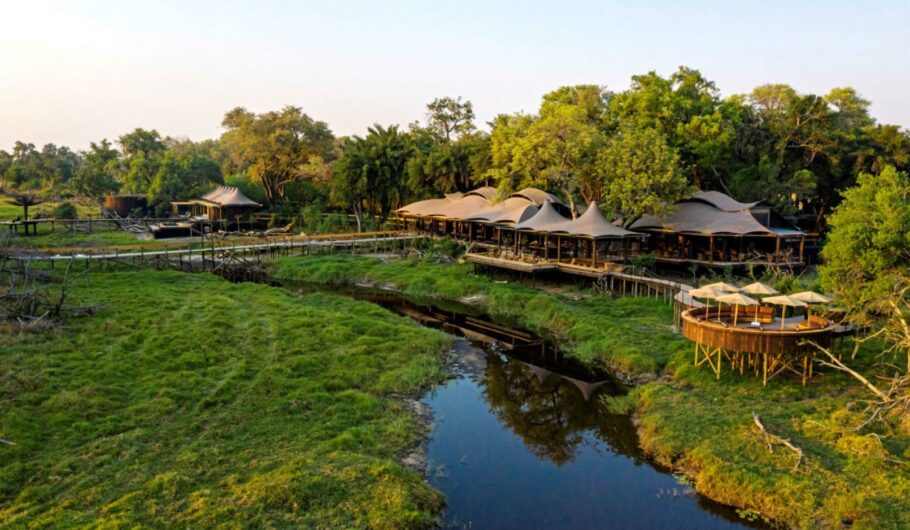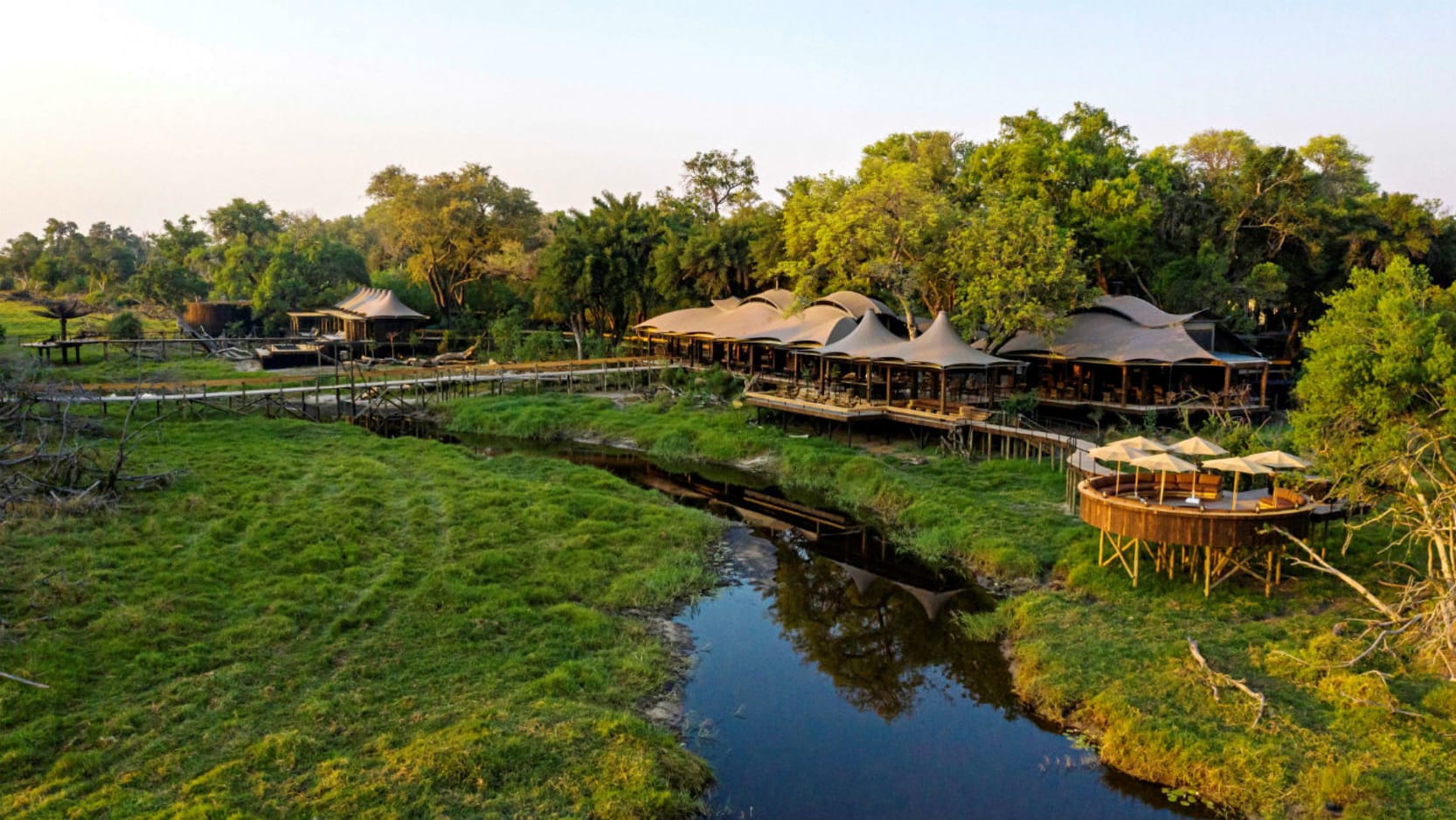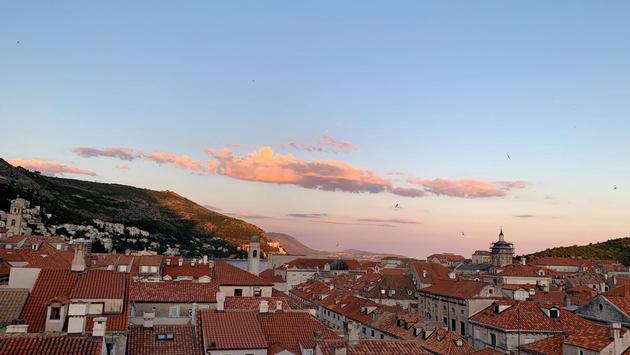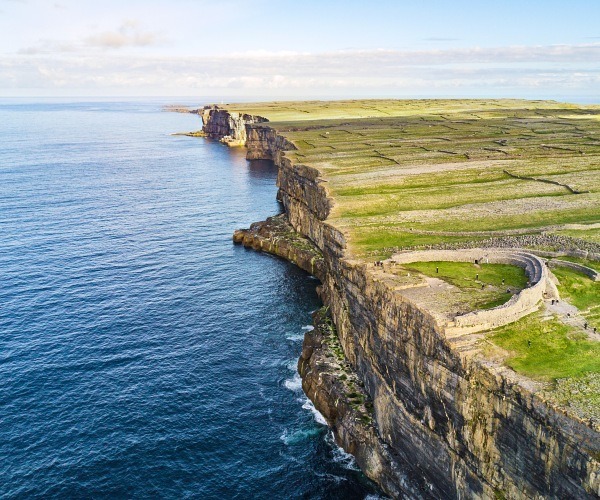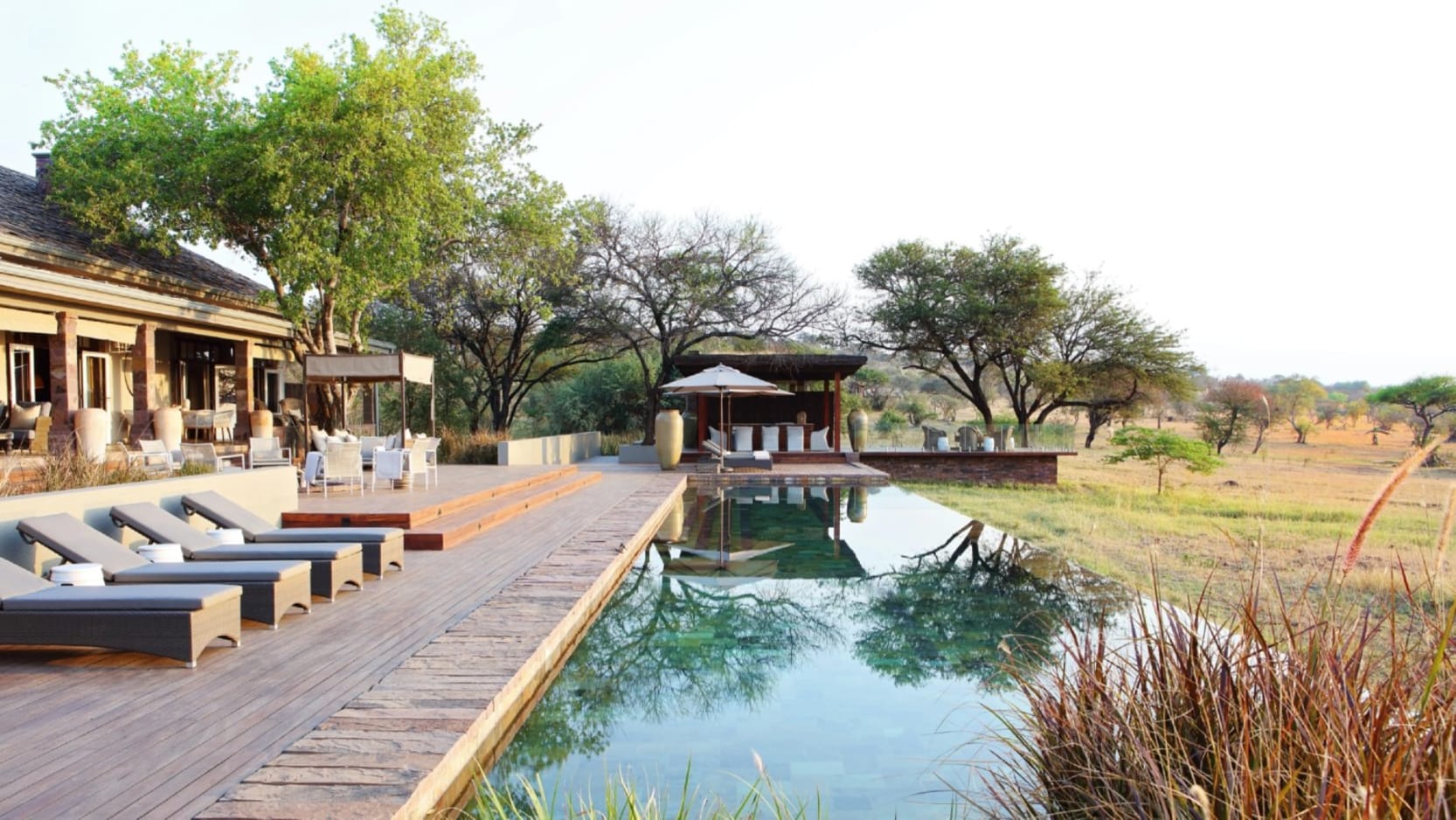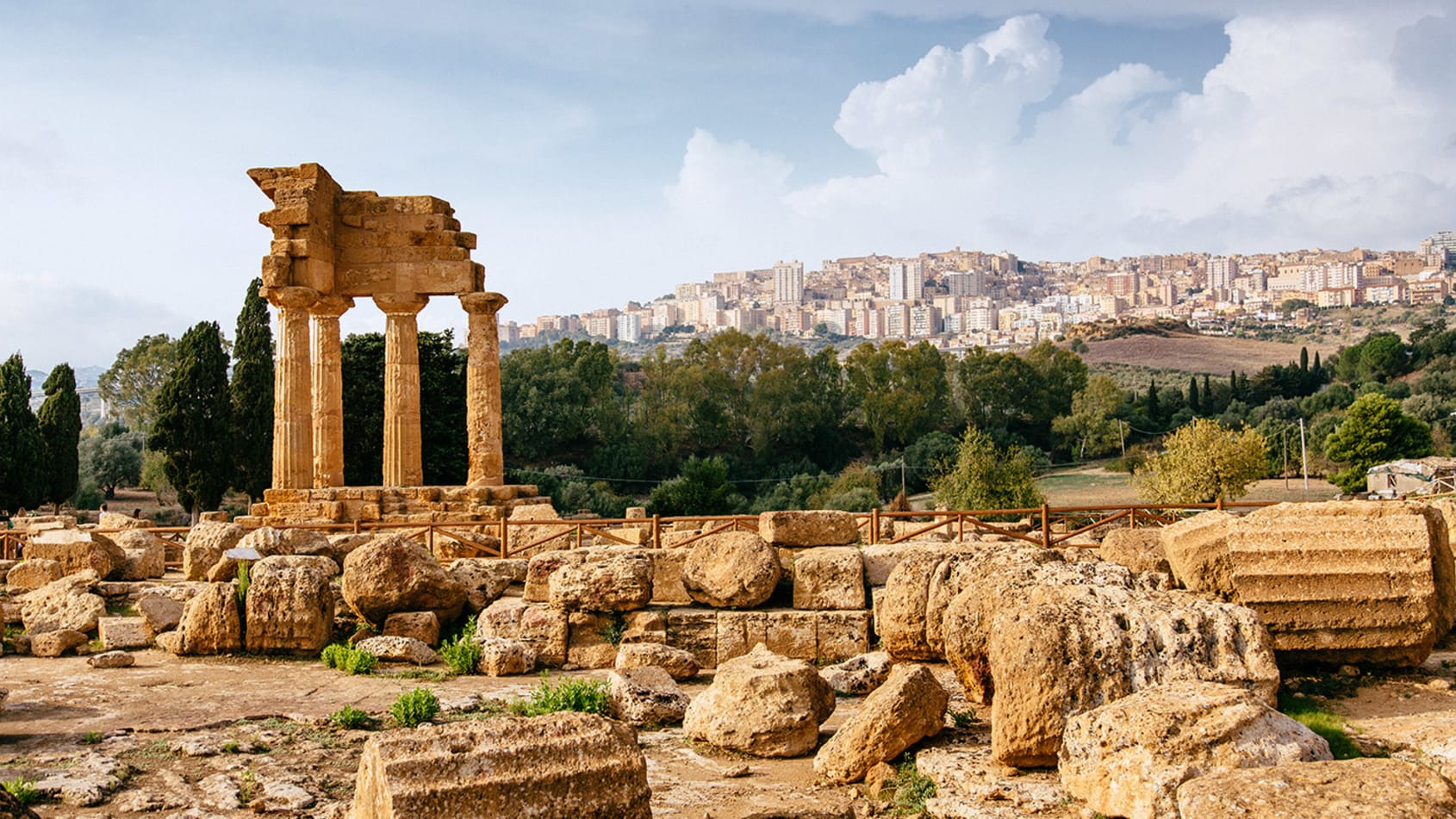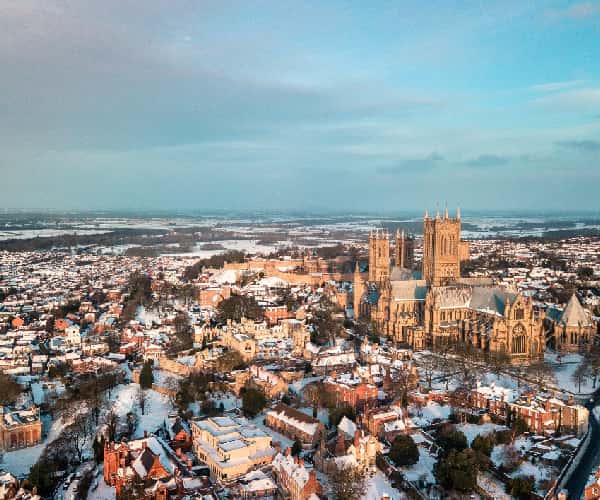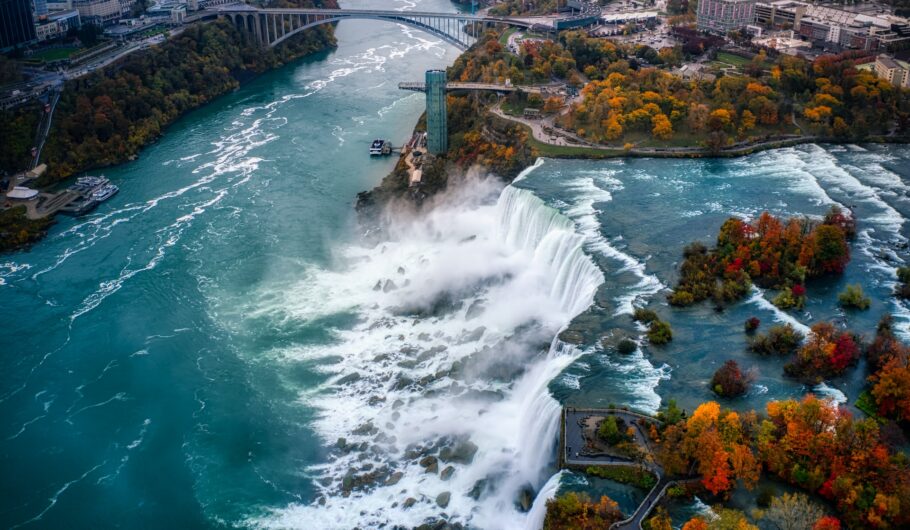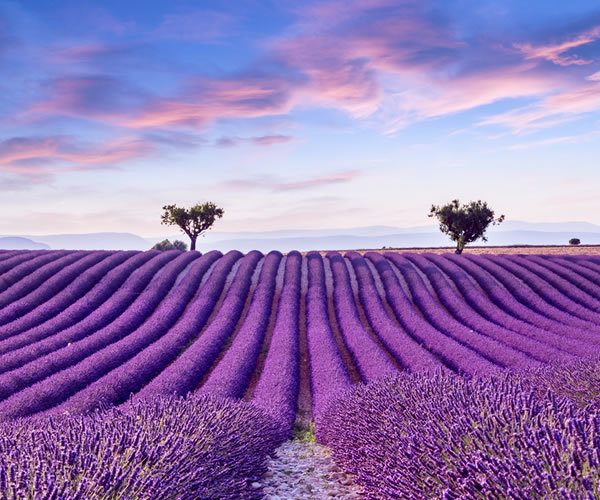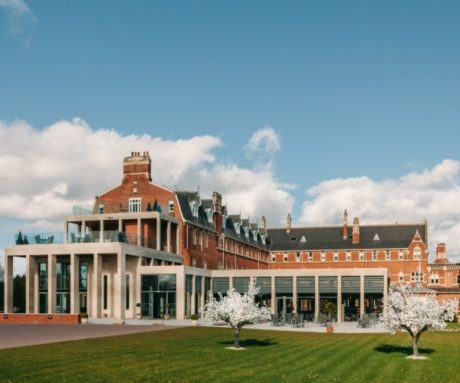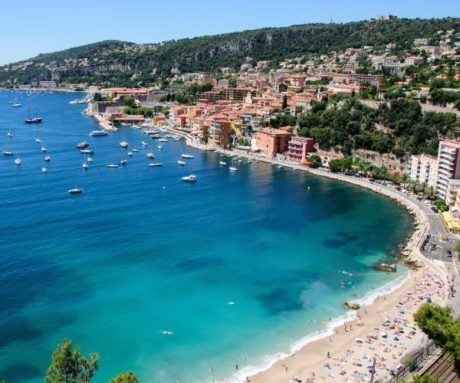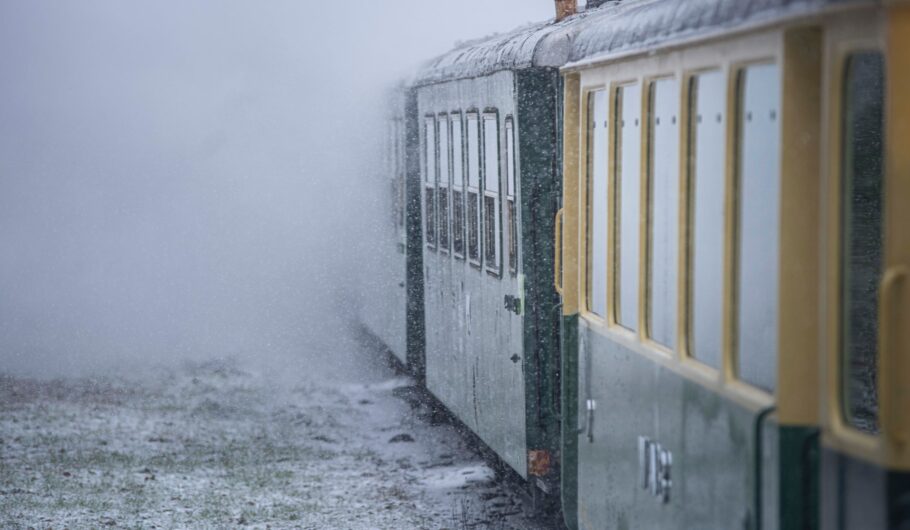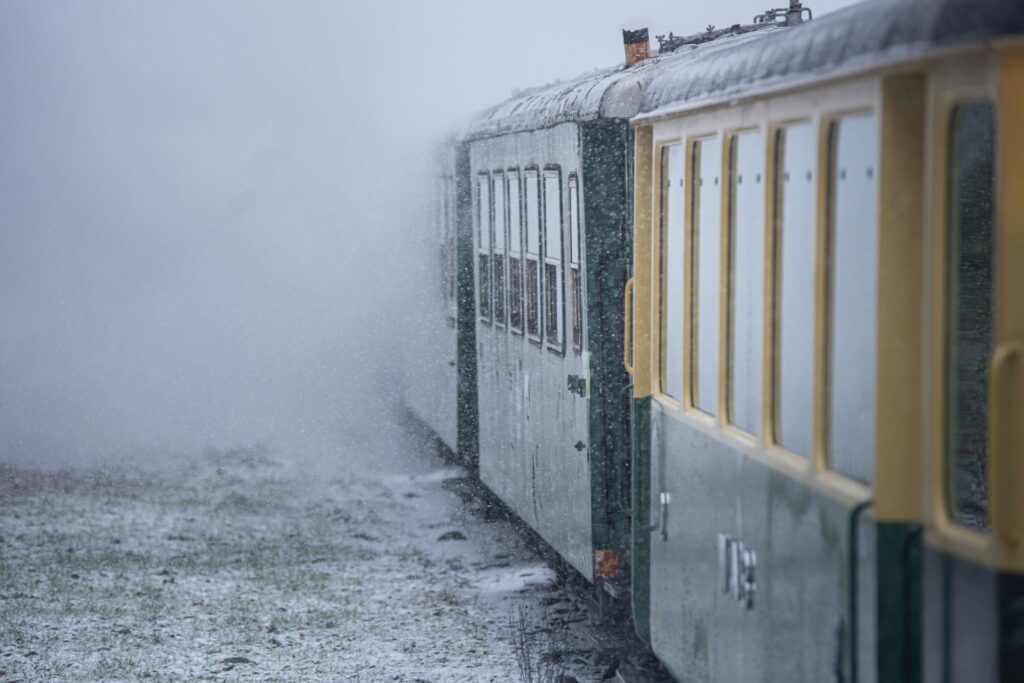Historic 130-Year-Old Railway Reopens in Colorado’s Rocky Mountains

A one-of-a-kind train system that’s transported visitors to the top of Pikes Peak in Colorado for 130 years has just gotten a new lease on life.
Following a three-year closure and a $100 million, full-scale renovation—which involved replacing the trains themselves, re-laying the track, reimagining the rail stations and constructing a new depot and the Pikes Peak Visitor Center—the historic Broadmoor Manitou and Pikes Peak Cog Railway is back in operation.
Recognized as the world’s highest cog railway (it’s actually only one of two such railways in the entire U.S.), its mechanisms are uniquely designed to handle its winding route through the majestic Rocky Mountains with grades as steep as 25 percent.
Known as “America’s Mountain”, Pikes Peak boasts breathtaking panoramic views over the forested landscapes that are said to have inspired the song “America the Beautiful”, and the hour-long journey to the top is equally filled with awe-inspiring sights.
Broadmoor Manitou and Pikes Peak Cog Railway has been delivering passengers to the peak since its first completion in 1891. It remains an important component of the Western U.S.’ heritage, partially because it was such a groundbreaking endeavor at a time when settlers were new to the region and local mining towns were still young.
“We believe that the Broadmoor is kind of the gateway to the American West,” said Jack Damioli, president and CEO at The Broadmoor hotel in nearby Colorado Springs, which owns the railway today.
The cog railway’s trains are able to ascend over 14,000 feet to the summit at such steep inclines thanks to a special third wheel that hooks into a third rail in the center of the track.
“A cog railway is a railway just like any other railway, but we use a center third rail to get all our traction and braking. A typical railway, they get all their traction and braking through the outside rails,” Ted Johnston, assistant general manager of Broadmoor Manitou and Pikes Peak Cog Railway, told CBS News.

As new decades dawned, the trains’ systems and rail cars were upgraded with 20th-century technology, but much of the railways’ infrastructure remained unchanged for over 125 years. That is, until 2018, when the line was shut down in order to conduct $100 million worth of renovations.
“We looked at everything when we did this project. The track, the trains, the depot facility that we’re at right now. And we retrofitted some of our older equipment,” said Johnston.
For the first time since they were originally laid down in the late 19th century, the tracks were completely replaced, and the company added three new trains, plus a snowblower so that they can operate in any weather conditions.
Since train systems have vastly modernized, and cog railways and accompanying parts were rare even at the time of its construction, the Pikes Peak Cog Railway engineers ended up turning to a European counterpart company for help. Switzerland’s Stadler Rail, whose trains negotiate the Alps, assisted with the manufacture and overseas shipping of new rail cars.
“The experience of going to the summit of a 14,000-foot mountain by rail has not changed. Yes, the cars are new. The track is new. But that awe-inspiring experience, it’s all the same,” Johnston said.
For more information, visit cograilway.com.
La Réserve Eden au Lac Zurich is Philippe Starck’s ‘modern day yacht club’
Located on the shore of the city’s lake, this luxury Swiss hotel is effortlessly stylish. Zurich has no shortage of beautiful views, but the one from my hotel room balcony has to be up there as one of the best. Situated on the shore of the city’s famous lake, I have a panoramic vista that stretches across the water to the Toblerone-like mountains in the south and the picturesque city centre in the north.
I am staying at La Réserve Eden au Lac Zurich, the latest offering from luxury brand La Reserve. This grand 100-year-old building has always been a hotel but was re-imagined by famed French designer Philippe Starck. He was inspired by the water-side location, choosing to style it as a modern day yacht club, complete with dark wood, leather, and exposed brick walls. It has seamlessly combined classicism with modernity and couldn’t be more different from its Belle Epoque predecessor.
What the redesign created is a casual luxury that entirely suits the Swiss way. It is effortlessly stylish but warm, somewhere both locals and guests want to come for a drink. The ground floor is home to Eden Kitchen & Bar, which serves traditional Swiss cuisine with a twist under Italian chef Marco Ortolani. The menu veers from serving simple grilled sole with pilau rice to Asian pork belly with fermented garlic to a classic cheeseburger.
The La Reserve chain, which also has properties in Paris and Geneva, is owned by entrepreneur and winemaker Michel Reybier. As such, an extensive list of his best vinos are available, including his fabulous champagnes, as well as an impressive cocktail selection.
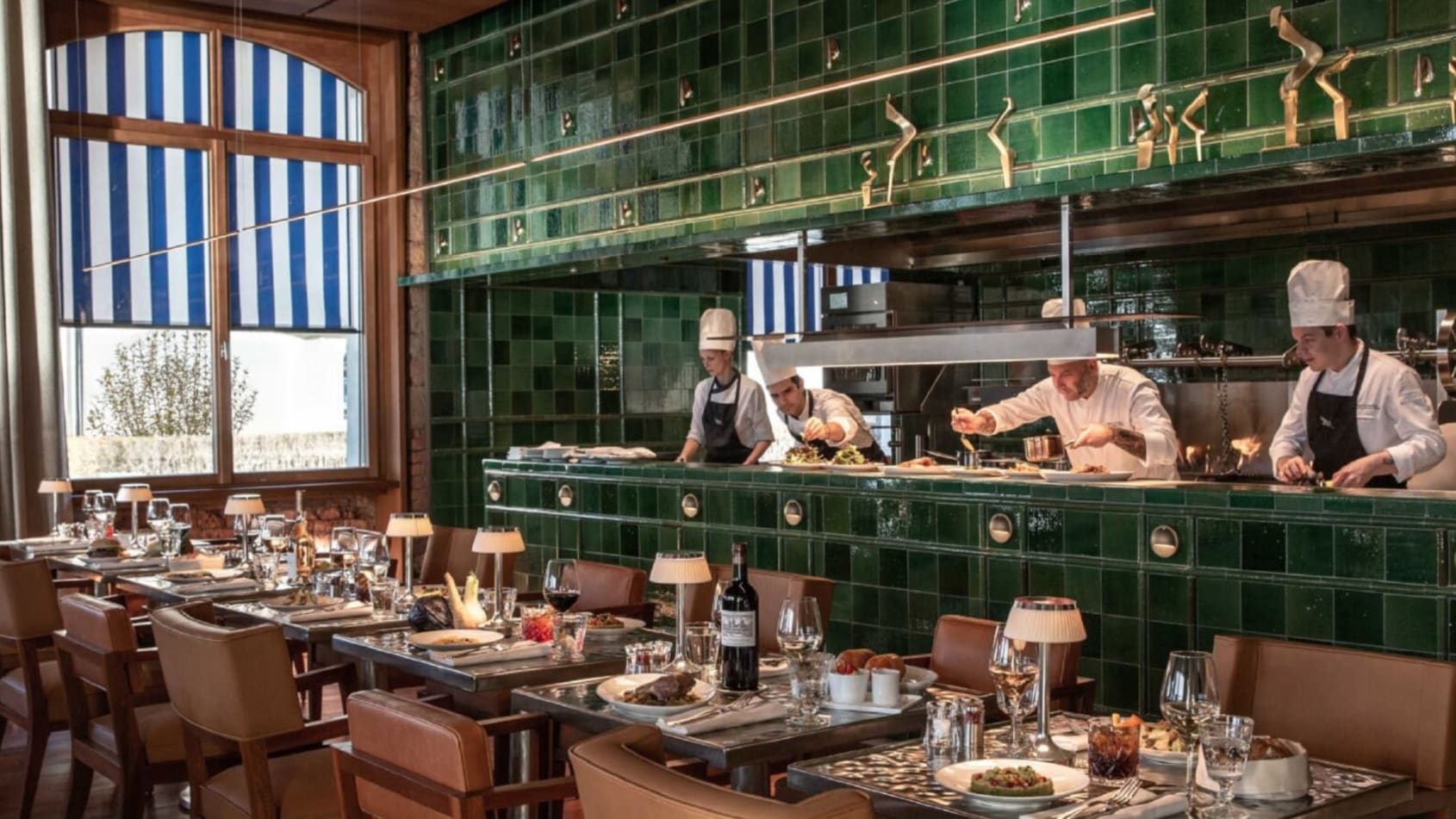
Attention to detail
What used to be a 50-room venue has been reduced to 40, creating larger spaces that Starck has styled with soft lighting and a natural colour palette. A king-size bed is situated in the centre of my room, directly facing floor-to-ceiling glass doors so guests are greeted by the lake as soon as they wake up. Both Starck and La Reserve’s attention to detail is evident throughout. There is a thoughtfulness that has gone into the design. There are sun hats for the good weather and umbrellas for when it rains.
A small pouch for your room key is made from the same buttery leather as the desk chair, a silver elephant with its trunk in the air is a handy ring holder next to the sink, and Dyson hairdryers make a welcome change from the substandard offerings often available in hotels. Toiletries are an exclusive, in-house brand, and a bottle of bath flakes really allow guests to take advantage of a massive, freestanding tub that also utilises that view.
An inspired menu
After an afternoon in the room I try out the hotel’s crown jewel, a Peruvian/Japanese restaurant called La Muña. Set within the domed roof of the building, which was the old hotel’s attic, it has the atmosphere of both a private yachting club and a wooden Alpine lodge. Walls are adorned with art and nautical references, while diners can choose between leather chairs or comfortable, floral sofas. They have also transformed two open spaces into roof gardens with sweeping 360 degree views.
La Muña serves up an inspired menu combining the best qualities of the cuisine from both countries, including beef entrecôte with gyuniku sauce, tuna tartare with sesame and jalapeno and even a simple dish of spinach, parmesan and truffle oil that he transforms into something truly magical.
Striking architecture
The hotel is just a few minutes’ stroll from Zurich’s opera house and ten minutes from the main shopping street of Bahnhofstrasse, so I spend the next morning exploring. Zürich is Switzerland’s wealthiest city, and it has a reputation as a home for bankers, but it has so much more to offer.
Life here revolves around the lake and the rivers that wind through the city. Bathers enjoy the water at almost any time of year, while riverside cafes and bars are the perfect way to people watch.
The city’s architectural heritage is also striking. The old town straddles the Limmat river and features a 12th century cathedral, tree-lined squares, cobbled lanes and St Peter’s Church, which has the largest tower clock face in Europe. But leave the city centre and you can find fantastic modern marvels, from the geometric Landesmuseum, to the multi-coloured Pavillon Le Corbusier, named after the Swiss artist and architect. Art lovers could also easily spend all day at the Kunsthaus Zurich, which houses one of the most important art collections in Switzerland, from Warhol to Durer.
Zurich in a box
Having worked up an appetite, I ate in Zunfthaus Zur Waag in the centre of the old town. Built in the 17th century, the building was home to the weavers guild but now hosts one of the city’s most iconic restaurants, serving up traditional Swiss fare. As they eat dishes including schnitzel or a creamy white wine soup, diners can view the Fraumunster Church through its historic stained glass windows.
A visit to Switzerland really wouldn’t be complete without a trip to a chocolate shop, and Zurich is the country’s cocoa capital. There are chocolatiers almost everywhere you turn, from the expensive Sprungli to Laderach, which has massive slabs in its windows. I went for Confiserie Honold, which was founded in 1905 and has been in the same family for four generations. It is famous for its beautiful truffles and petit fours made from the original recipes. I chose to take home a range of flavours, from the classic to the experimental. Rich, exciting and luxurious, they are almost Zurich in a box.
By Jaymi Mccann www.theweek.co.uk
Lufthansa introduces Sleeper’s Row on select long-haul flights

An entire row of airplane seats all to yourself on a long-haul flight? Sign us up.
Lufthansa Airlines, Germany’s national carrier, is offering travelers the chance to create their own “Sleeper’s Row” on flights of 11 hours or more by purchasing all three seats in the row in economy class to fully lie down during the flight.
The program began on Monday. There are no reservations for the Sleeper’s Row. If the adjacent seats are empty at check-in or at the gate, passengers have the option of booking the other two seats (or three depending on how long the row is and the type of aircraft).
There is also a surcharge starting at 159 euros, or $188.57.
The offer comes with a comfortable pillow, blanket and mattress topper of Business Class quality, allowing passengers to fully relax while on board before reaching their final destination.
Safety during the flight is ensured by a special seat belt, which remains fastened even when the passenger is lying down, including separate safety instructions. Furthermore, passengers who book a Sleeper’s Row can benefit from pre-boarding, allowing them to enter the aircraft earlier than other guests.
Lufthansa tested the Sleeper’s Row on its route from Frankfurt to Sao Paulo last year and said the offer received much positive feedback from passengers and was in high demand. The Sleeper’s Row is a further step toward more product diversity in Economy Class to meet passengers’ wishes for more comfort and individuality, the airline said.
And if you really enjoy sleeping on a plane, especially a lie-flat seat, now you can do it at home.
Qantas, Australia’s national carrier, is auctioning off two lie-flat, Business Class seats that once graced the inside of a Qantas A380 aircraft. One winning bidder will be able to install these aircraft seats and recreate the inflight experience at home, and can even watch the built-in TV screens with a special converter.
The auction began Monday and runs through August 6, with a different item – including a private charter flight and a 787 simulator experience – available each day. The A380 seats are set to go live at 8 a.m. AEST on August 5.
One catch: to enter the auction you have to be based in Australia, as well as be a member of Qantas Frequent Flyer program with points to spare.
Wine destinations that may surprise you
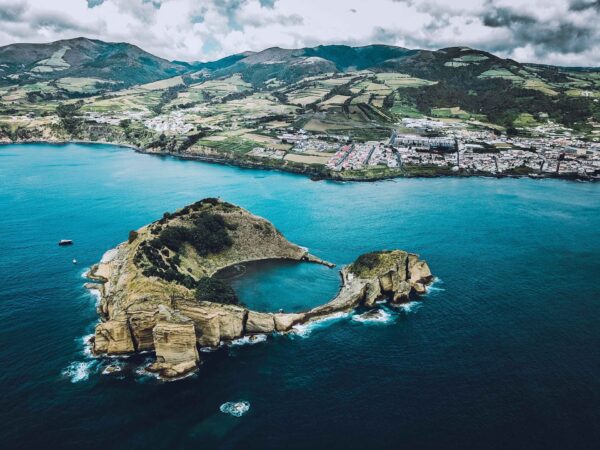
While Spain, Italy, and France typically enjoy the limelight when it comes to well-known wine regions—think Rioja, Tuscany, and Bordeaux—travelers have long known that what we drink at home is often dictated by what gets exported and imported. Demand for bottle diversity has expanded what we can find on the shelves (thankfully), so it’s easy to find Saugvignon Blanc from New Zealand, Malbec from Argentina, and Pinotage from South Africa. Unfortunately, it’s not possible to get every vintage out there, especially from lesser-known areas. The only option may be to plan a trip and return with a few bottles in your checked luggage. Although the big name regions are famous because they produce excellent wines, winemakers the world over have adapted to fit the environment where they live. Below are five wine regions that may surprise you!
Slovenia
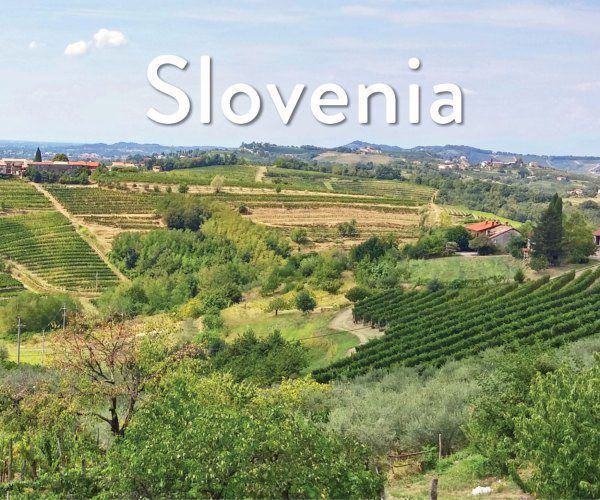
Winemaking in Slovenia predates that in France and Spain, and the country is home to the world’s oldest grapevine (along with 28,000 wineries!). Slovenia has produced award-winning wines, many of which are considered some of the world’s best. Lucky for those who live there, local wines are rarely enjoyed outside of the country because most of it is consumed within its borders and little is exported. Three wine regions grow 52 varieties that are crafted into red and white wines. Slovenian wine is an excellent complement to the superb cuisine on offer there.
Vermont, USA
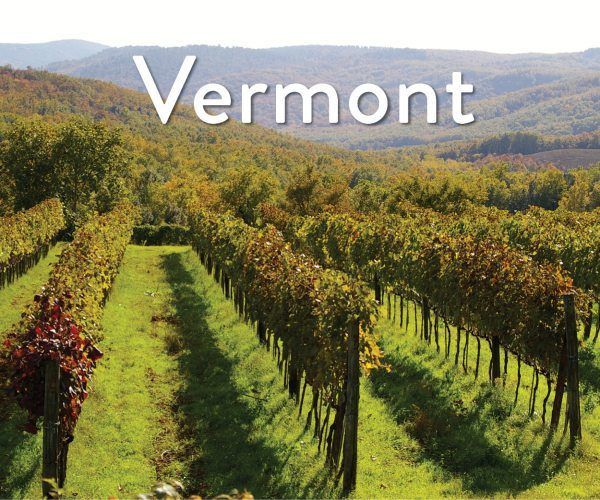
In the U.S., most people can name only California as a wine-growing region, but smaller pockets are scattered around the country from Washington and Oregon to New York and as far north as Vermont. While better known for its cider (both alcoholic and not) and craft beer, Vermont’s northern location and cold climate support several uncommon varieties. Of the 15 wineries in the small state (population just over 600,000), many of them also make wines using other fruit such as rhubarb, blueberries, and apple, along with dessert ice wines. There are also a couple of places that produce mead or honey wine, which is thought to be the world’s oldest alcoholic beverage.
Azores, Portugal
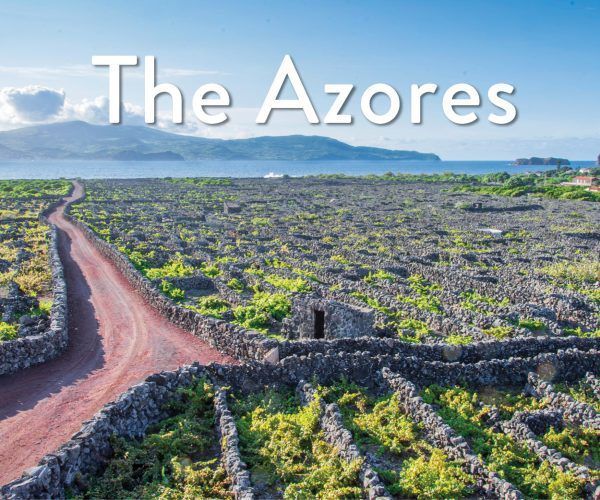
Portugal is well-known for its fortified wine, port. While Portugal’s mainland is home to the famed wine region of the Douro Valley, there is another area of the country that produces incredible wine. It just happens to be in the middle of the Atlantic Ocean. Pico Island in the Azores is known as the “Island of Wine” and produces the majority of wine for the islands. Due to the strong winds that prevail in the location and lack of tree protection in the volcanic landscape, vines are enclosed in a grid of rock wall wind breaks. These also create heat pockets that help the vines thrive. It’s an utterly unique viticulture tradition that has earned a UNESCO World Heritage designation, as well as producing delicious wines.
Bhutan

The foothills of the Himalayas might be the last place you would expect there to be grape vines, but in 2018, the tiny Kingdom of Bhutan got its first vineyards. They were planted with nine varieties, including Merlot and Chardonnay. The first harvest will be in the fall of 2020, so the world will have to wait a bit longer to see how it comes out. While the country is considered the world’s last untapped viable grape wine region, the Bhutanese already have a tradition of making peach wine. Very sweet and refreshing, it’s definitely worth a try!
Croatia
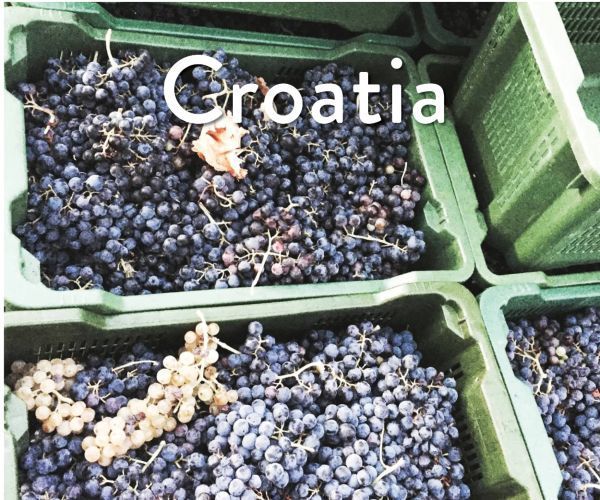
The first people to produce wine in what is now Croatia were the Ancient Greeks on the Dalmatian Islands. So this region has had plenty of time to perfect the art. Now, Croatia is one of Europe’s most talked about emerging wine destinations with 64 indigenous grape varieties. Like Slovenia, most of it is consumed by Croatians making it somewhat unlikely you’ve had a chance to try some. White wine makes up about 60% of the country’s production. Fun fact: California might not be the wine region it is without a Croatian varietal – the Zinfandel grape.
By Matt Holmes
The best luxury hideaways in Mexico
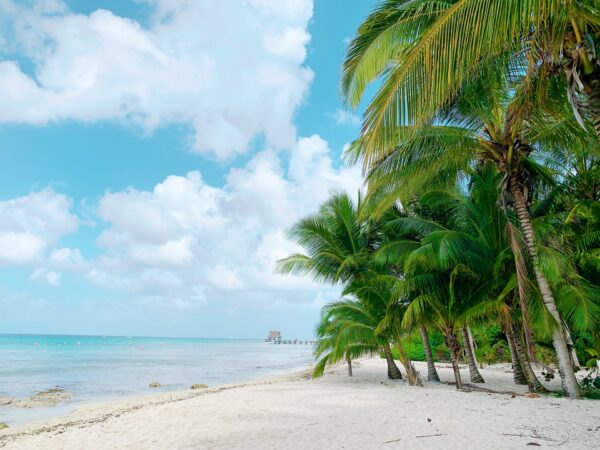
There’s no denying that this is a tricky time to think about travel, plan travel and execute a stress-free vacation. However, for many of us needing to steal a few days (or weeks) to get away and escape our quarantine locations, Mexico has a ton of great offerings waiting for us when we’re ready to travel again.
The weather there has been great, the resorts are bending over backwards to accommodate their guests while creating safe environments, and the Mexican government is being very pro-active in making sure everyone is using common sense when entering their country. You might not be ready to travel down there tomorrow, but when you do, just imagine how nice it would be to work remotely while savoring the perfect spicy margarita and feeling the warm sand beneath your feet.
The number of luxury resorts throughout Mexico seem to grow each month. For those seasoned Mexico travelers, or those looking to break from their normal destinations and try Mexico for the first time, any of these five luxury resort hotels are guaranteed to deliver you an elevated level of service at a time when service and safety are things we can’t get enough of when traveling and vacationing.
1. Andaz Mayakoba Resort Riviera Maya
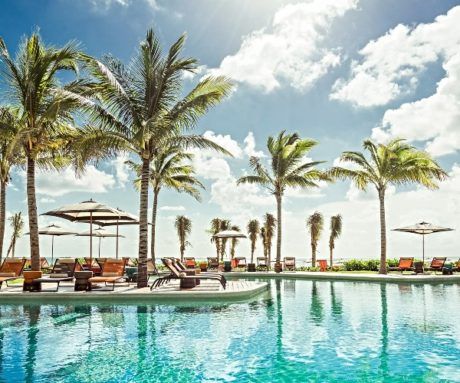
Andaz Mayakoba Resort Riviera Maya provides plenty of space to spread out and social distance, but it’s not so large that you get lost. Located directly on the beach just north of Playa del Carmen’s exciting community of shops and restaurants, kids of all ages will find plenty to love about this resort. And if you’re a fish taco person, you must try them here. Their fish tacos are life-changing – trust me, I wouldn’t lie when it comes to fish tacos!
If you’re traveling with kids, they have a great Kid’s Club so consider that a plus. Escape to the water for swimming, paddle boarding, snorkeling or even kitesurfing for those more adventurous types. The spa excels at customizing treatments for you, so allow for a few hours to splurge on yourself at Naum Wellness & Spa. Golfers will not be disappointed with Greg Norman’s El Camaleón Golf Club at Mayakoba golf course that is as challenging as it is beautiful.
For only having a few hundred rooms and suites on the property, the diversity of room types is another reason to love this resort. For my personal favorite, see if one of their Beach Front Bi-level Suites are available for the best of the best. These spacious two-level suites have stunning views of the Caribbean Sea with plenty of living and dining areas to spread out. And the real reason it’s a favorite: the private plunge pool!
2. Auberge Esperanza in Cabo

Auberge Resorts Collection has become a favorite for bespoke experiences unlike any other, and Auberge Esperanza certainly lives up to this reputation. Perfectly located on the Baja Peninsula, they like to remind you that they are the only private beach resort in Los Cabos. Just four miles outside of the town of Cabo San Lucas and 30 minutes from the San Jose Del Cabo International Airport, Auberge Esperanza really does feel more like a community, versus your standard resort.
Spend the days in one of the pools, venture out for world-class fishing, arrange for a tequila tasting experience, or have a private chef prepare an unforgettable dinner for you in your villa. Regardless of what you decide, you will find that the attentive staff go above and beyond to make your stay one that you won’t soon forget. My favorite activity on the property is the “Dive-In Movie” complete with snacks down at the Mercado pool!
Their curated residential escape offers always make for a great option when planning your stay. These let you live like the locals and take advantage of the Baja lifestyle with private pools, ocean view terraces and often even include a private butler and private chef to seal the deal. Whether you choose one of their Casitas or Oceanfront Villas – or splurge for one of the 1- to 4-bedroom private vacation home rentals – the community feel will have you ready to move-in!
3. Four Seasons Resort Punta Mita

Four Seasons Resort Punta Mita is better than ever after their recent multi-million-dollar renovation, and they are eager to welcome you with their “mi-casa, su casa” attitude from the time you arrive to the dreaded time arrives that you must leave. The perfect balance of luxury and sophistication with privacy and relaxation creates an ideal oasis for a Mexico vacation for the record books.
There are plenty of wide-open spaces so there’s never a worry of being too close to your neighbors while enjoying the sprawling beaches and large pools with pre-reserved loungers. Looking beyond just relaxing around the resort, you can also check out the whale watching excursions, take a long walk along the nature trails, or tee it up for a round of golf on one of the two Jack Nicklaus-designed golf courses. I am always eager to visit the spa at this property, and highly recommend that you try something new: they have a “touchless treatment” when healing vibrations of Tibetan bowls balance your energy centers and restores harmony in your body. I just love it and feel completely refreshed when I’m done!
Here, it’s all about the service… Their signature poolside ice cream attendant, a sunglass “doctor”, artisan churro maker and celebrated hourly complimentary snack amenities at Nuna pool. What’s not to love? The Ocean Plunge Pool Suites are a favorite with the extended terraces, but if you are needing more space, then the 5-bedroom villas and beach homes have you covered!
4. One&Only Mandarina

Of course, you want to be one of the first to stay at a new resort, and I know you will love everything about One&Only Mandarina. Not far from Punta Mita, this is a true escape in every sense of the word. This new community is situated on a rare undeveloped piece of the coastline along the Riviera Nayarit. Low-density planning, sustainable design, unique architecture – they thought of everything, and then delivered it with the uber high level of service you expect from the One&Only brand.
Did I also mention the coastal rainforests, white sand beach and the opportunity to personalize your very own personal retreat with yoga, meditation and rainforest workouts? One&Only Mandarina is ideal for simply relaxing, catching up on your work Zoom meetings, or pushing the envelope to try something new. Polo, perhaps? The Mandarina Polo & Equestrian Club is coming soon, and it will be a treat for experts and novices alike wanting to play polo or simply take a trail ride.
Regardless of how you want to spend your days, the reason I’m obsessed with this resort is the opportunity to stay in one of their treehouses. This is not your neighbor’s backyard treehouse; this is your very own palace high in the trees! The Panoramic Ocean Treehouse is worth the splurge with views that go on forever, and is completed with a private pool, floor to ceiling windows and doors… and you can even have room service delivered 24 hours a day in this treehouse. This is an Instagrammers dream destination, and I just love everything about it!
5. The St. Regis in Mexico City

With tourism slower than ever before, this is also a unique time to visit Mexico City – though the energetic buzz around the city is not at its typical over-the-top level, it’s still a great destination to explore. The St. Regis Mexico City will be the perfect place to call home, and their extreme attention to safety will leave you free of worry so you can focus on Mexico City’s culinary scene and culture! Rising 31 stories above the streets below, The St. Regis Mexico City is a modern masterpiece, but with authentic nods to the local culture throughout the design and offerings.
While at the property, I highly recommend a visit to the indoor pool and then a treatment (or three) at the Remède Spa. You deserve it! Another local favorite outside the doors of your home-away-from-home is a small group food and drink excursion with Club Tengo Hambre. With nearly seven centuries of tradition among this cosmopolitan metropolis of more than 20 million people, these tours showcase why Mexico City is known to be one of the most exciting food cities today. These tours offer both the best of the local street food vendors and globally ranked restaurants, so definitely consider a tour with this group.
Back at The St. Regis Mexico City, I love the large rooms and suites that the hotel offers. Be sure to ask for a higher floor if you’re okay with heights as the views of Mexico City are mesmerizing. While there is not a bad room type within the hotel, I prefer the Executive Junior Suite for the unique design and natural light. However, if you are looking to spoil yourself, the Astor Vice Presidential Suite gives you over 1,600 square feet of luxury. The best part of this suite though is the view out over three of the most representative icons of Mexico City: The Angel of Independence, Diana the Huntress Fountain and the Chapultepec Castle. You must, must try their signature Sangrita Maria if you’re a fan of a good Bloody Mary… and this one is epic. Yes, please!
By Eric Hrubant
Dream destinations: Discover the Okavango Delta
Discover the Okavango Delta at Xigera Safari Lodge
Xigera Safari Lodge has opened in Botswana’s wildlife-rich Okavango Delta. Hidden amid a canopy of indigenous trees, Xigera features 12 spacious suites; each individually designed to offer a unique experience of the Okavango.
The lodge is a unique celebration of African art, culture and creativity: a living gallery of African talent. Experiences include glass-bottom mokoro excursions gliding across the delta’s waterways and a unique sleepout experience in a baobab treehouse.
Rates at Xigera Safari Lodge start from $2,320 (£1,700) per adult per night sharing. This includes accommodation on a fully-inclusive basis, park fees and all activities.
The Hermès of Real Estate

Premier Estate Properties: Florida’s Leading High End Luxury Real Estate
Premier Estate Properties was established in 1993, at the time, there was no real estate company in the entire United States, let alone the world that was devoted solely to the Million-Dollar plus marketplace. “When they pioneered in 1993, it was a major milestone for that niche,” says Leslie Rennemo, the firm’s Public Relations consultant. Yet skeptics suggested perhaps this trio of visionaries were limiting themselves by concentrating on such a special segment of the market. Fast forward to the present, Premier Estate Properties is the number one high end luxury real estate company in Florida with six flourishing offices in Old Boca Raton, Suburban Boca Raton, Delray Beach, Fort Lauderdale, Vero Beach and Palm Beach.
To this day, Premier Estate Properties is the only leading real estate company that deals exclusively with the Million Dollar plus residential market. “We found our niche and provided our clients the best possible service while striving to exceed their expectations and assuring confidentiality” says Joseph G. Liguori, a founding partner and co-owner of Premier Estate Properties. Together, D’Angelo, Liguori and Liguori’s twin brother Gerard P. Liguori, make up the formidable trio of Premier Estate Properties. All three of whom ranked in the Wall Street Journal’s prestigious list of top residential real estate sales professionals. This places them in the 99.99 percentile out of the more than 1.3 million realtors nationwide. Rennemo straightforwardly states “if you encapsulate, they are not only the best at what they do, they are the only ones who do what they do. When asked how they find inspiration for their groundbreaking ideas and business model, Liguori honestly replies, “We are driven by placing the needs and goals of our valued clientele first and foremost.”
Let Us Talk Numbers
Premier Estate Properties currently leads the industry with an average listing of $4.87 Million and an average sale of $4.2 Million, as well as generating more record-breaking sales in more communities in their geographic market with 2020 sales over $1.5 Billion. In addition, the firm’s estate portfolio of diversified lifestyles totals approximately $1 Billion, reflecting the trust and confidence of their select clientele.
Award Winning Marketing
Premier Estate Properties takes pride in their unmatched strategies for marketing their ultra-luxury properties, aiming to “uncover and capitalize on every opportunity to sell our clients’ important properties,” emphasizes D’Angelo. The brokerage firm won four prestigious International Property Awards including one for best real estate marketing in the United States.
Another marketing strategy includes by invitation only – open house galas that are held at various listed properties. These gatherings allow for an elite group of prospective purchasers to enjoy the luxury of one of Premier Estate Properties’ exquisite estates. They have also partnered with the word’s top luxury brands including Rolls Royce, Cartier, Ritz Carlton, Neiman Marcus, Aston Martin, UBS, US Trust, Trinity Yachts, Bentley Motor Cars and Marquis Jet in successful efforts to co-brand these events. At one event, Magnificent Jewels Collection, Premier Estate Properties partnered with Christie’s Auction where approximately $100 Million in jewelry were displayed at their listed $28 Million oceanfront estate.
Technologically Speaking
“Cutting Edge Innovation has been the thread that runs throughout everything they do,” Rennemo reveals, a theme Premier Estate Properties has maintained throughout their triumphant journey. In the early 1990s, when many companies casually dismissed the importance of the Internet, Premier Estate Properties decided to embrace it, and became one of the first real estate companies to have a domain name. Thanks to the foresight, www.premierestateproperties.com is now registered in 32 major countries and won the International Property Awards for Best Real Estate Website.
It does not stop there; this tech-savvy firm is constantly finding new ways to improve and optimize the web-browsing experience for high-net-worth buyers.
Furthermore, their expansive global network of affiliates includes Christie’s International Real Estate, Mayfair International Realty, Luxury Portfolio, Board of Regents, Leading Real Estate Companies of the World, Who’s Who in Luxury Real Estate and FIABCI International. This vast network of 4,380 offices worldwide and 140,000 agents in 74 countries, with annual sales over $430 Billion, allows for their estate portfolio to be marketed internationally as well as featured on more than 900 luxury websites.
For more information, please contact the Corporate Office at 561.394.7700.
Contact US
Premier Estate Properties
Corporate Office
800 East Palmetto Park Road
Boca Raton, Florida 33432
561.394.7700
Premierestateproperties.com
EXCLUSIVE OFFICES
Old Boca Raton: 866.281.3884
Suburban Boca Raton: 866.214.1118
Delray Beach: 866.502.4572
Ft. Lauderdale: 866.221.2098
Palm Beach: 866.485.1955
Vero Beach: 866.220.3072
The best things to do In Croatia right now

There’s more to Croatia than Game of Thrones, apparently. I’m only kidding since I’ve actually never watched the show, but some people really do flock to this Southeastern European country because they saw it in the famed series and want to experience GOT scenery in real life.
Earlier this year, after getting vaccinated, a couple of friends and I decided to plan a long-awaited European vacation, but not to any of the super popular spots. Underrated and 120 percent worth it, Croatia awoke that desire in me to travel again after being locked down for what felt like 16 years.
The Dalmatian Coast is home to the friendliest of people (everyone we spoke with said we were experiencing a rare moment in time where the cities weren’t overcrowded with tourists and Americans and cruise ships). All roads lead to crystal clear, teal waters where you can swim without a care in the world because there are no dangerous marine life (AKA sharks) here. It seemed, for such a quaint place, that there were more Michelin-rated restaurants in a super small radius than in New York City. That’s an exaggeration, but there were quite a few.
If you’re planning a trip to Croatia, the summer is a tad hot. It’s also more expensive since that’s when most people plan their longer vacations. Opt for a trip in the spring or fall, but if you do decide on summer, it’s the perfect weather for watersports, ferry rides and other outdoor/water-adjacent adventures.
Our trip was short — a little over a week — so we stayed along the Dalmatian Coast, island and city-hopping every couple days or so to be able to experience everything the region had to offer. Headed to Croatia? We’ve got you covered with tips, activities, restaurant options and more.
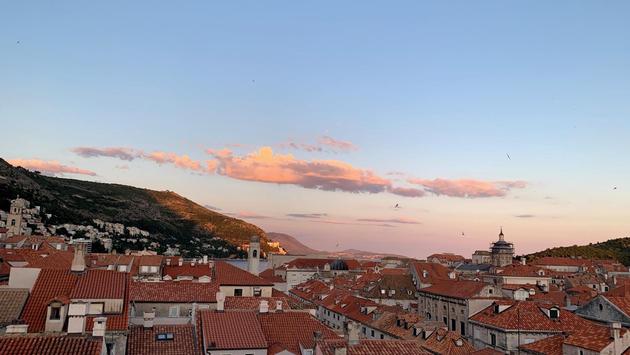
Dubrovnik
In Dubrovnik your best bet is to book an Airbnb, in or outside of the walled city. Know that wherever you stay, there will be stairs, which means lugging your suitcases up and down when you arrive and when you depart. If you prefer the luxury of hotels, Hotel Excelsior Dubrovnik, Villa Orsula Dubrovnik and Hotel Bellevue Dubrovnik offer breathtaking Adriatic views and are just outside of and within walking distance of Old Town.
You’ll find the tiny Above 5 restaurant atop a boutique hotel and yes, it’s five stories up. But the climb is worth it at this Michelin Guide restaurant with 360-degree views of the Old Town. Reservations are a must as there are two timed seatings a night here and around eight to ten tables, total. Opt for three or five courses at this rooftop restaurant; the mushroom ravioli is spectacular as are the sea bass and the mango panna cotta.
Notable bars here include D’Vino Wine Bar (where you can taste local and regional reds and whites in an alley), Bard and Buza Bar — two cash-only outdoor spots right next to each other on a cliff looking out to Lokrum Island.
Coveted activities here include kayaking and day trips to nearby islands including Lokrum. Climbing the Jesuit Stairs from Game of Thrones are a must even if you’re not privy to the series and make sure to squeeze in a cable car excursion or a walk around the Walls of Dubrovnik for an even better look at picturesque Old Town.
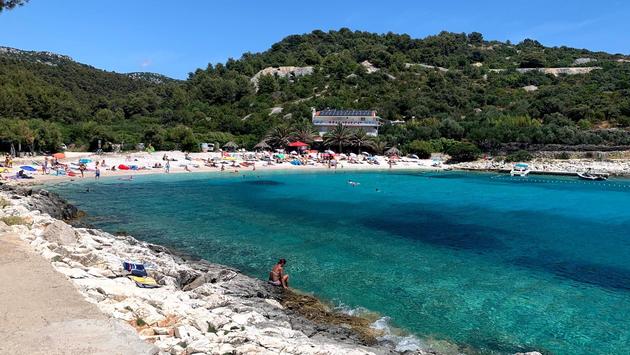
Hvar
Take a three-hour ferry (or a four-and-a-half-hour car ferry if you’ve rented a vehicle) from Dubrovnik to the resort town of Hvar and prepare to be wowed in this yacht-filled island with plenty of secluded beaches for lounging and pine forests for hiking and maybe even getting off the beaten path a little. Hvar is known for its lavender and its wine, its fig trees and olive trees that can be spotted bearing fruits on the side of the road almost anywhere you look.
Book a room at the 4.7-star Hotel Park Hvar if you want to stay in the middle of the action. Breakfast is included at this hotspot, there’s a semi-private courtyard where you can enjoy a book, and there’s a little restaurant right outside the hotel called Black Pepper that serves up modern Croatian dishes with a twist. Central Park Club, also attached to the hotel, is a great place to end the night with drinks and live music; like everything else in Croatia at the moment, bars and restaurants here close at midnight daily.
Secure a sunset sailing trip in Hvar to have an experience like no other with a guide who’ll be happy to share their favorite local spots around town and who’ll bring wine and snacks for the journey. Don’t miss the market in the square where you’ll find locally-made jewelry, lavender products and more. Our other favorites here were a hike to Pachamama and Robinson Beach (sometimes there’s a water taxi that’ll take you back to town) and dinner at Konoba Luviji Rooftop Restaurant. Whole-cooked fish, locally-made cheeses and house-cured meats are a must here, along with Croatian wines, and dessert, of course. We’d recommend staying in Hvar for at least three nights and checking out super cute gifts and design store called Isola before your departure.
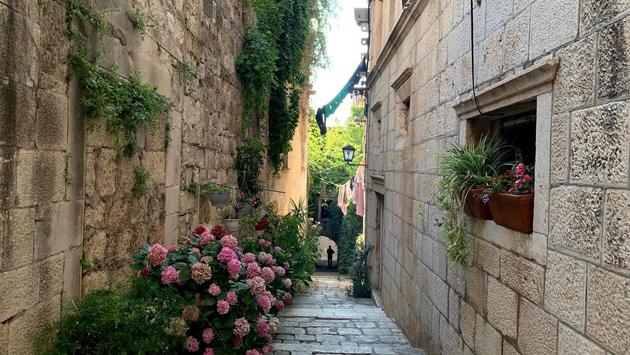
Korcula
Hop on an hour-long ferry from Hvar to Korcula and make sure you’re hydrated and you’ve had a good night’s sleep. Summer temps here can creep into the 90s and chances are you’ll spend some time outside checking out the town and various swimming spots, as well. If you don’t have a car in Korcula, it’s a good place to rent one so you can drive around the island and discover small places to eat al fresco as well as all the wineries in Lumbarda. There are at least a handful. Grk is the local white wine produced from a native grape that’s not found anywhere else in the world. Visit Bire Winery for variety and Lovric Winery for a white, rose and red tasting that includes little snacks like tomatoes stuffed with cheese and anchovies and finishes with a shot of house-made grappa. Make the most of your stay by booking an Airbnb or rental apartment in Lumbarda or in Korcula’s Old Town for a couple of nights. Get ready for the next leg of your adventure but not before checking out Cocktail Bar Massimo (not for the faint of heart, this rooftop bar on top of an old fort is accessed by a ladder), the Michelin-starred LD restaurant inside Lesic Dimitri Palace and Restaurant Filippi.
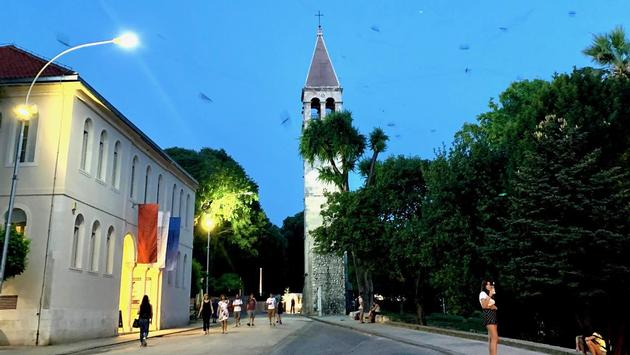
Split
Last but not least, Split. We took the ferry from Korcula to Split, which was pretty early in the morning, so be sure to check ferry/catamaran times and book accordingly. Azur Palace is a cool, small boutique hotel with an almost invisible entrance off a side street/alley across from an Asian market. Loft-style rooms are perfect for a group of two or four and the hotel has a quiet little courtyard and indoor library area with books and magazines available to borrow. This city felt the most touristy and bars/restaurants were pretty packed considering there were still no cruise ships docking at the time.
Rent a car or take a bus tour to Krka National Park. Swimming is no longer allowed here, but the waterfalls are still a sight for sore eyes if you’ve got at least a half-day to spare. If driving, Bibich Winery is a beautiful stop on the way back to Split from Krka. Ask for a customized tasting and don’t dare skimp on the food — it’s delicious.
Explore Diocletian’s Palace on foot; you could spend hours winding in and out of the little souvenir shops, pubs and alleyway bars. You can’t go wrong with breakfast, lunch or dinner at Fig Split; there are gluten-free and vegan/vegetarian options on the menu, which can be a nice way to switch it up after loads of seafood and cheese-filled meals. Another option for a lively dinner is Bokeria kitchen + wine bar. The restaurant offers a Mediterranean-inspired menu with croquettes, gourmet burgers, charcuterie platters, pasta dishes and more.
A couple of nights in Split should suffice if you’re not planning to take more than a road trip or two. From here, you can take the ferry or a bus back to Dubrovnik if that’s where you’ll be flying home from. Be aware that the bus stops once at a rest stop/market and twice in Bosnia-Herzegovina for passport control.
Las Vegas’ summer pool party are in full swing at the MGM Grand

Las Vegas famously seems to do everything in extremes, and the pool and day club scene is no exception. This becomes especially evident in the summertime when the desert sunshine becomes oppressive if you’re outdoors without somewhere to go for a splash.
Located in a secluded area of the sprawling MGM Grand resort property, past its signature dining and nightlife district, the MGM Grand Pool Complex represents the Las Vegas Strip’s ultimate outdoor escape.
Accessible exclusively to guests of the MGM Grand, the 6.5-acre Pool Complex provides the ultimate aquatic playground, complete with four distinctive swimming pools, three whirlpools, cascading waterfalls and its famous 1,000-foot-long lazy river, which leisurely winds its way around the complex.
Resort guests at the pool complex enjoy top-notch amenities, including five poolside bars and the Cabana Grill, a seasonal restaurant and snack bar, which stands ready to satisfy your post-swim cravings. There are various options for upgrading the outdoor experience by booking reserve seating—everything from private loungers to poolside or lazy river pods for two; premium daybeds with room for four people; or several styles of deluxe cabanas that can accommodate up to six people.
Cabana rentals include exclusive welcome amenities and feature flat-screen televisions, ceiling fans, refrigerators, couches, lounge chairs, personal safes, poolside Wi-Fi internet, pool rafts, umbrella, towel service and personalized bottle and food service. Cabanas can accommodate up to six guests and are an ideal spot for celebrating any kind of occasion with a group of friends or family. Renters also receive half of the rental amount in beverage credit.
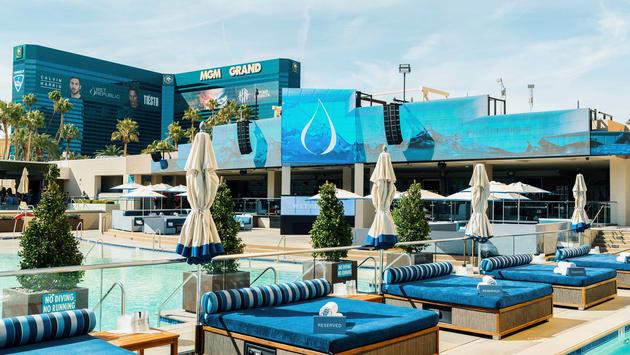
Within the complex, the adult guests can also take advantage of the award-winning Wet Republic Ultra Pool, a 54,500-square-foot venue that brings an exclusive nightlife vibe together with poolside pampering and relaxation. The adults-only pool destination features intimate dipping pools, daybeds, banquets, tricked-out bungalows and party cabanas. There’s also an open-air covered lounge that provides a place for guests to mix, mingle, dance and dine.
Poolside or at the lounge, guests can enjoy special culinary delights, signature cocktails and premium bottle and pitcher service, with a dedicated valet on hand to attend to their needs. The Strip’s premier outdoor party destination, Wet Republic Ultra Pool’s expansive sundeck also transforms into an entertainment stage, which hosts some of music’s hottest DJs as they headline weekly events. Tickets and event details are available online.
For more information, visit mgmgrand.mgmresorts.com.
Is French cuisine forever changed?

“French cuisine has always been in a state of movement,” said famed French chef Alain Ducasse, taking a sip of crimson-hued sparkling wine, surrounded by the empty wooden tables of his Paris restaurant Aux Lyonnais. It was a warm day in March 2021. A soft breeze floated into the restaurant through the takeaway window, sunbeams illuminating the empty burgundy leather booths. The maitre d’, dressed in a suit, glided between the kitchen and the curb, brown paper bags brimming with plant-based fare ready to hand off for delivery. The crinkling of the bags in motion was the loudest sound in the room.
Things are different now. After months of lockdown measures, curfews and restaurant closures, Paris is slowly beginning to resemble its former self. The packed tables of cafe terrasses spill off pavements and onto boulevards, waiters once again balancing glasses of rosé on silver platters and cigarette smoke lingering in a never-fading cloud. The chirping birds along the Boulevard Saint-Germain have been replaced by the constant drone of revving engines.

But according to Ducasse – currently the world’s most Michelin-starred chef and emblematic figure of French gastronomy, often nicknamed the “godfather” of French cuisine – gastronomy had been quietly evolving behind the doors of shuttered kitchens during the pandemic’s darkest days. He says Covid-19 accelerated the next “re-evolution” of French gastronomy.
In March 2020, the order to shut down restaurants due to the pandemic sent chefs into a tailspin. After getting the news on a Saturday evening with a room full of diners, Ducasse learned he would need to close at midnight, without any foresight as to when they might reopen.
“We lost a lot of merchandise, and gave a lot of merchandise to employees,” he said. “It was too fast.” France’s dining scene ground to a halt.
Ducasse took a sip of wine. Behind him, an antique clock sat atop a mirror in the back corner of the restaurant. It was stuck on 06:43. He put a paper napkin on his lap. “The French are very strongly rooted in tradition,” he said, laying out bamboo cutlery with concentration.

In 2010, Unesco inscribed the gastronomic meal of the French onto its Representative List of the Intangible Cultural Heritage of Humanity, permanently enshrining the French meal under its protection. However, the designation isn’t just about the food. It emphasises all the traditional elements that comprise a gastronomic meal in France, from the notion of conviviality – the idea of gathering together in a warm-hearted atmosphere – to the thoughtful selection of high-quality local produce. Other elements in the designation include table setting, food and wine pairings and a fixed meal structure.
The designation underscores the importance of dining as a process, which has even been enshrined into French law: until the pandemic, for example, it had been illegal for employees in France to eat lunch at their desks.
Fast-forward to 2020 amid continued restaurant closures, where delivery drivers sped down deserted Parisian streets, shuttling Michelin-starred cuisine ready to be plated up against the backdrop of the latest Netflix series.
But Ducasse didn’t see this pandemic shift as a threat to French gastronomy. It was an opportunity.
“The re-evolution in cuisine is freedom,” he said. In France, such progressions aren’t new. The last momentous evolution of French food – Nouvelle Cuisine, spearheaded by Paul Bocuse in the 1970s – was in large part driven by the desire by chefs to create cuisine for which they themselves would be recognised, breaking from traditional dishes to make lighter, healthier and hyper-personalised dishes that challenged some of the rules of classic French cooking.
Yet the traditional ritual around the meal remained rigid. A mere few years ago, the topic of the “doggy-bag” – bringing leftover food home from a restaurant – sparked national debate. Now, it’s mandatory for restaurants to provide takeaway materials to diners in an effort to cut food waste, prompting the Ministry of Agriculture to rebrand the practice as the sexier”gourmet bag”.

Ducasse is not a figure that one would traditionally associate with takeaway, paper napkins or cheap food. But in April 2020, Ducasse, who had never offered a takeaway or delivery service before – or even considered it – launched Ducasse Chez Moi, an online delivery platform featuring a selection of dishes from his Paris restaurants including Champeaux and Spoon. As part of the shift, he also launched Naturaliste, an inexpensive, plant-forward delivery and takeaway restaurant in the kitchen of Aux Lyonnais, behind its shuttered dining room. Essentially, a ghost kitchen.
“We would have never dared to do it if we didn’t have to. It was an opportunity. Restaurants were closed, so we said we’re going to try food differently,” he explained. “It would be accessible; a food that we could deliver, and a food specially edited for delivery.”
When I spoke with Ducasse in March, he didn’t seem fazed by the transition to delivery. He was sitting up straight in his wooden chair, gesticulating with enthusiasm as he talked about his ideas for the future. The maitre d’ was busy greeting customers at the takeaway window, taking orders for Naturaliste.
For Ducasse, Covid-19 sped up France’s next gastronomical evolution, which he says is marked by a profound desire for human contact, an interplay between global influence and local produce, the growing role of plant-based cuisine and a rapidly evolving consumer. “The new consumer is curious… Unfaithful. You have to seduce them,” he said. “You have to take them on a journey.”
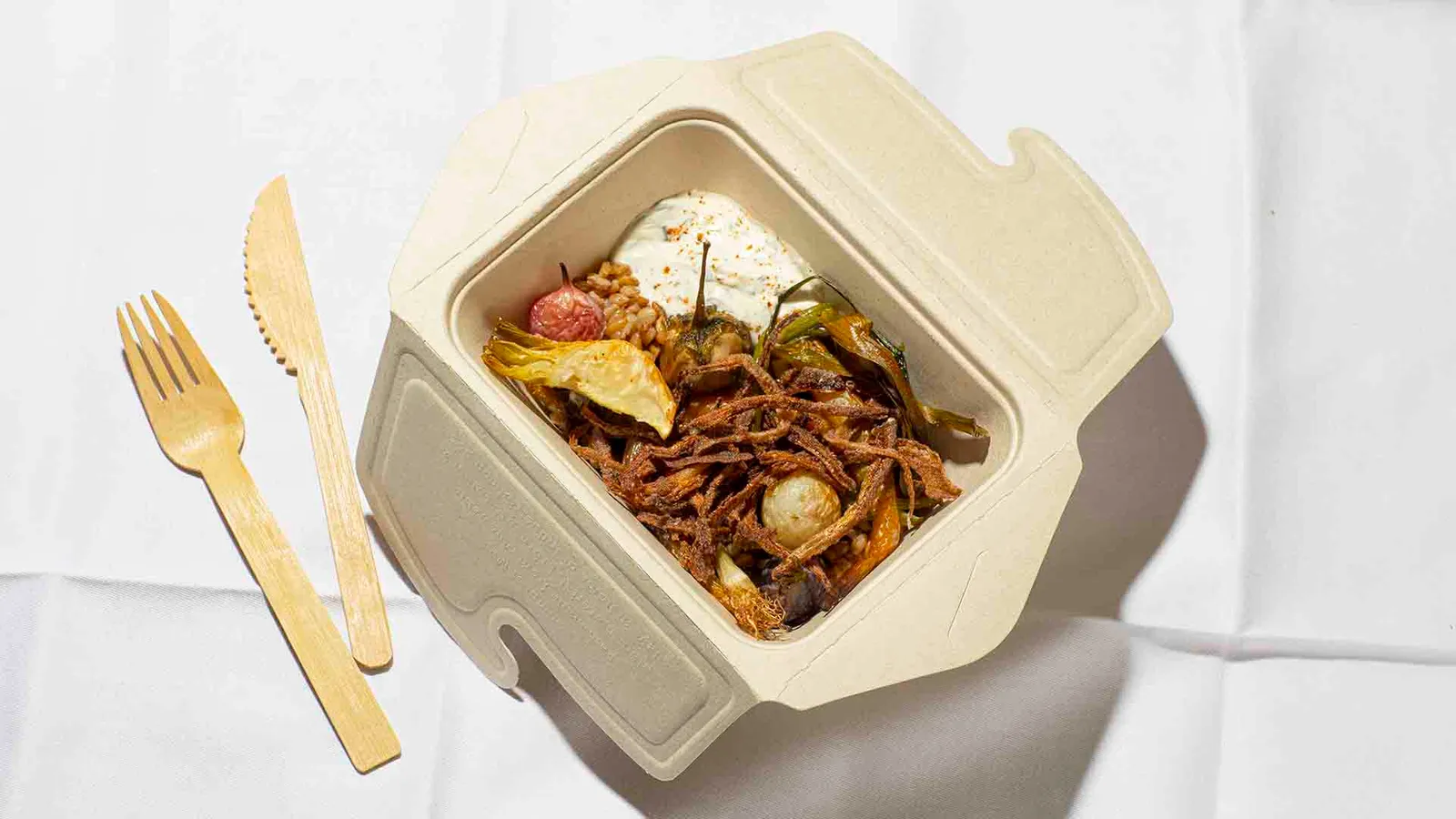
Maryann Tebben, author of Savoir-Faire: A History of Food in France, expands on the notion of a changing consumer, reflecting on how “they hear about it, they’re reading about it, they’re careful about the ecological footprint that they have, and they’re more savvy than their parents or grandparents were about what food does for the environment.”
When I think of French cuisine, plant-based cooking isn’t the first thing that comes to mind. I think of meat, of Toulouse sausage, foie gras and calf brains. But, Ducasse points out, the growing emphasis on plant-based dishes didn’t happen overnight; in recent years, vegetable-forward menus have been growing in the nation’s top kitchens. And at Ducasse’s restaurants, this focus goes back even further.
In 1987, he introduced plant-based menu Jardins de Provence to his three-Michelin-starred Le Louis XV restaurant in Monaco. Now, “30-40% of clients choose this 100% vegetarian menu,” he explained.
You may also be interested in:
• A simple French dish made from pantry staples
• Anne-Sophie Pic: the chef who rules France
• The Basque cake made with a 280-year-old water mill
Patrick Rambourg, a researcher specialising in French gastronomy and the author of Histoire de la cuisine et de la gastronomie françaises(History of French cuisine and gastronomy),has also been observing the transition to more sustainable cuisine in recent years. He agrees that France is in the midst of its next culinary evolution; and in his view, it wasn’t catalysed by the pandemic. Instead, the movement has been slow and profound, he believes, growing due to an interplay between changing consumer demands and the eagerness of chefs to embrace the challenge of transforming vegetables into the star of a dish.
“The chefs are aware of a changing consumer that cares about where products come from. There are also people that want to eat high-end cuisine, gastronomy, but don’t want to eat something unhealthy,” he said. “There’s a change in consciousness around cuisine. Kitchens don’t have a choice but to adapt.”
However it has come about, Ducasse is embracing the shift toward sustainable, vegetable-forward cuisine. In September, Naturaliste will transform into Sapid, a more permanent plant-based restaurant centred around conviviality on Rue Paradis in Paris’s 10th arrondissement. It will feature a refectory-setup with communal tables, encouraging the social contact that people lacked during the past year.
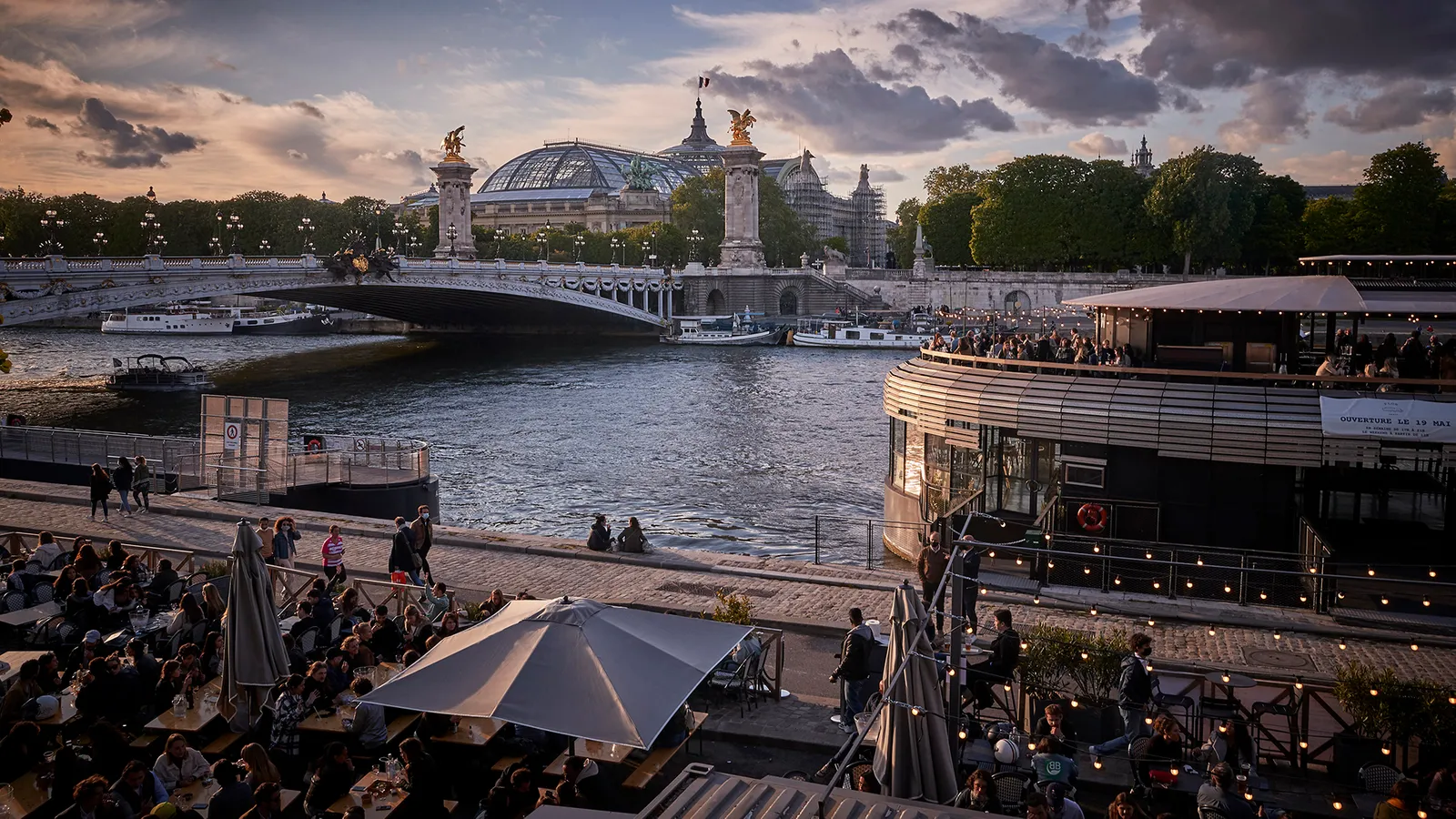
Back at Aux Lyonnais, the maitre d’ reappeared and placed two cardboard boxes on the table. I peeked inside. The dishes – roasted cabbage with avocado and smoked eel, and braised seasonal vegetables with sauteed mushrooms and quinoa – were the creations of young Peruvian chef Marvic Medina Matos, who has worked in the kitchens of three Michelin-starred Alain Ducasse au Plaza Athénée and Le Meurice Alain Ducasse.
Her dishes emphasise local produce and sustainability. “We work with respect to the seasons, and our menu changes according to the season,” she told me. “I love putting the producers and ingredients forward.”
Ducasse frames this next re-evolution of French cuisine as “local in production, global in the vision” with careful attention to the quality of ingredients, recalling Unesco’s insistence on “the balance between human beings and the products of nature”.
Human beings, however, are not as malleable as farm-grown asparagus or the country’s hundreds of varieties of cheese. Evolution is shaped as much by resistance as by change, and some are in no hurry to abandon the generations-old rituals that define the Gallic art of eating.
France’s cultural rituals have endured wars and revolutions. Ultimately, amid a year of stay-at-home orders and delivery-bound gastronomy, have the French changed their habits?
Ducasse looked down at his glass. “They’ve kept the bad habits,” he said with a grin, taking another sip of sparkling wine.
Lily Radziemski www.bbc.com
The Magic of Guanajuato

When most people from the United States think of Mexican destinations, they often think Cancun, Playa del Carmen and other beach destinations. But there’s another, more authentic side to Mexico that most don’t see.
Guanajuato is a Mexican state located in central Mexico. It’s home to UNESCO World Heritage sites and specially designated “Pueblos Magicos,” or Magic Towns, for their connection to history, culture and beauty. Travelers can explore the state’s important monuments to Mexican history, from pre-Columbian ruins to its revolutionary past, taste diverse regional dishes, explore the area’s important museums and celebrate like a local with its festivals found only in this part of the country.
The state is easily accessible through the Bajio International Airport, which welcomes weekly flights from 16 destinations including Chicago, Los Angeles, Dallas, Cancun and more. Accommodation options range from historic farmhouses renovated into boutique hotels to highly rated hotel brands offering luxury amenities like award-winning golf courses, offering something for every visitor.
Guanajuato is one of the biggest wine producers in Mexico, and a visit here is not complete without a tour of the area’s stunning vineyards. The Mexico Selection by Concours Mondial de Bruxelles awards will be held in the state in November and December.
Other lovely festivals include the International Hot Air Balloon Festival, rated among the top three balloon festivals in the world, along with the International Film Festival, made in collaboration with German filmmaking schools. A cultural event not to be missed is the wonderful three-week Cervantino International Festival in October, which celebrates Cervantes, the author of the most famous work of Spanish literature, Don Quixote.
Personal events are also given expert tailoring, including weddings, baby showers, engagement parties and more. Guanajuato City and San Miguel de Allende are just two of the most beautiful and romantic cities in the state, featuring Cristo Rey, the Basilica of Our Lady of Guanajuato, San Miguel Arcangel Parish and Expiatorio Temple. Other non-religious wedding or event venues are historic haciendas, beautiful gardens or vineyards.
Foodies can sample an array of delicious regional cuisine, from enchiladas mineras, a regional take on traditional enchiladas that grew from the region’s mining industry, to Otomi and Purepecha. Food tours are great ways to sample the best local restaurants in any Guanajuato city.
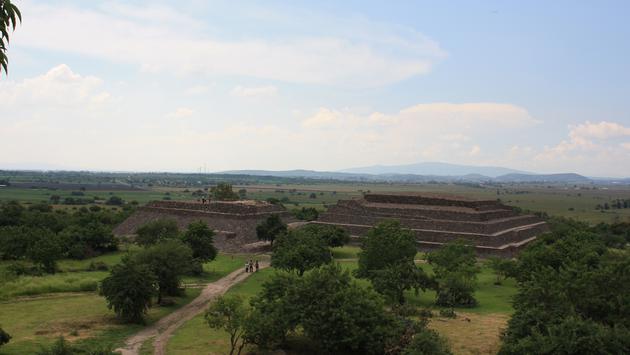
Lastly, history and culture lovers will enjoy touring around the state to discover its connection to Mexico’s important history. From the Peralta Archaeological Zone, featuring a well-preserved complex from a currently unknown pre-Columbian civilization, to the small town of Dolores Hidalgo, in which began the Mexican Revolution when local priest, Miguel Hidalgo, started an independence movement with his “Grito de Dolores,” or Cry of Dolores. With architecturally stunning churches and beautiful flower-covered buildings, Guanajuato’s cities and towns offer much to be explored.
To learn more about this destination, please visit Guanajuato’s official tourism website.
Great things to do in Ireland

A small island that packs a beautiful punch. People travel from far and wide to play a round of golf on an Irish ‘green’, visit the world’s largest Titanic experience, and search for the ‘luck of the Irish’. Yet there is so much more to this vibrant, verdant land, home to breathtaking landscapes, fascinating history, rich culture, and wonderfully welcoming people.
Located in northwestern Europe, Ireland is the second largest island in Europe. The country comprises many cosmopolitan and vivacious cities, as well as numerous small and remote villages. This contrast in lifestyle is something to fall in love with; in Ireland you can experience the best of both worlds. Experience the hustle and bustle of Dublin’s city streets before strolling down a country lane, passing fields and farms in County Carlow.
Ireland’s frequent rainfall lends itself to some of the most beautiful and verdant landscapes in the world, however this unpredictable weather can dissuade some travellers from venturing there.
So, join me on a journey around the Emerald Isle to discover the 10 best things to do in Ireland and fall in love with the country’s people, history, culture, and mesmerising 40 shades of green. Wherever you go, you will be sure to enjoy the ‘craic’, the Irish expression for having fun – and remember, a little rain is all part of the authentic Irish experience!
Explore the west coast

Experience Ireland’s beautiful and rugged Wild West by foot or bike, following a range of wonderful trails, including green roads, which are the tracks of former horse and cart roads. Meander along rivers, tranquil lakes, the untamed Atlantic Ocean, through dense woods, and among soaring mountains, all the while being amazed by the antiquities, historical remains, the incredible vistas, and you might even meet some friendly locals eager to chat. In order to get the most out of this experience, we recommend booking a guided tour to benefit from the knowledge and passion of experts on flora and fauna, as well as history, geology, music, and folklore. En route, explore charming villages and soak up Irish culture in an authentic way with the locals. Enjoy a pub lunch in the Galway Bay, and then spend the afternoon cycling across rocky limestone and the diverse ecosystem of the Burren. Stop off in Roundstone, the capital of Connemara, a 19th-century town with a picturesque fishing harbor nestled in a sheltered bay. Here, tour the Roundstone Musical Instrument Center and learn about the tradition of Irish music and the instruments still used today.
Taste Irish delicacies

Continue following along the Wild Atlantic Way to Galway, the halfway point. Although it is the fourth largest city in Ireland it has maintained much of its small-town character and is home to many artists, writers, and artisans. As well as being a popular seaside destination with long sandy beaches, it also has a thriving and cosmopolitan city center with a vibrant creative scene. A stay at the Glenlo Abbey Hotel is one of Galway’s finest experiences. Step back in time and dine aboard the Pullman Restaurant, two beautifully restored original carriages of the Orient Express set in the tranquil grounds of the hotel. Enjoy the luxury of a private booth and take in the spectacular views overlooking Glenlo Abbey Estate and Lough Corrib. The award-winning Pullman Restaurant is a dining experience like no other, with two AA Rosettes to its name.
Seafood lovers will be blown away by the Galway International Oyster & Seafood Festival, the world’s longest running Oyster Festival and one of the most internationally recognized Irish events. Held on the last weekend of September in the center of Galway City, it’s a unique opportunity to take part in seafood trails and tantalizing oyster tastings, and savor food from some of Galway’s finest restaurants.
Take to the skies

Soar above Ireland’s spectacular coastline and outer islands in a private helicopter and you take in the country’s wild beauty from a perspective like no other. Fly over the breathtakingly impressive Cliffs Of Moher, a sheer precipice reaching eight kilometers long and rising to a height of 203 meters, this is one of the most beautiful stretches of coastline in the West of Ireland. Touch down on the undiscovered Aran Islands, where Irish (Gaelic) is the everyday language of the islander, and take a private guided tour to discover local island pubs, crafts, and local culture before being welcomed into the home of a local family to savor a freshly caught lobster.
Uncover Wicklow, the Garden of Ireland

Explore the beauty of the Irish east coast, best known as the Garden of Ireland. Ireland’s mild temperate climate (with no lack of rainfall!) offers a diverse landscape of botany to be enjoyed all year round. If you are looking to be wowed by endless magnificent blooms, the best time to visit is from spring to early summer. Just south of Dublin, County Wicklow is a wild garden of coastline, woodland, and mountains – voted the third best garden in the world by National Geographic.
Powerscourt Gardens, stretching over 47 acres, encompasses Ireland’s largest waterfall and offers a magnificent combination of the aristocratic themes of French and Italian formal garden designs dating back to 1732. On beautiful walking trails, lose yourself in a stunning blend of sweeping terraces, mythical statues, and ornamental lakes. Round off your garden tour with a stay at the indulgent Powerscourt Hotel Resort & Spa, set just 30 minutes from the hustle and bustle of Dublin. Borrow a complimentary bicycle and explore the hotel’s vast gardens or take a dip in the indoor 20-meter swimming pool, lit up by Swarovski crystals.
Drink Guinness in Dublin

A small capital with a huge reputation, Dublin has a mix of heritage and hedonism that will not disappoint. Experience the tradition, heart, and soul of Ireland’s most iconic beer at the Guinness Storehouse. Guided by a Guinness expert, make your way through the building, which was once the fermentation plant of the brewery, and explore the ingredients, history, and culture that tell the story of this Irish stout. End your tour at the Gravity Bar, taking in the breathtaking panoramic views of Dublin city whilst sipping on the smoothest and most velvety pint of Guinness you’ve ever tasted.
Explore Ireland’s historical sites

Journey through some of Ireland’s most iconic cultural heritage as you walk through the cobblestone alleys of Trinity College Dublin. Wander the same halls that some of the world’s greatest writers once did, such as Oscar Wilde and Oliver Goldsmith, and feel inspired by the historical richness that surrounds you. Visit the magnificent Old Library, constructed in 1952, where you will find the Book of Kells, a precious 9th century manuscript, featuring an exquisite combination of ornate Latin text and intricate illuminations. Discover how the world’s most famous medieval manuscript was made and learn about its rich symbolism. Everyday, the Old Library displays a different page from The Book of Kells, each telling a different story and demonstrating the incredible craftsmanship and detail used to create it.
Travel to the medieval heart of Ireland
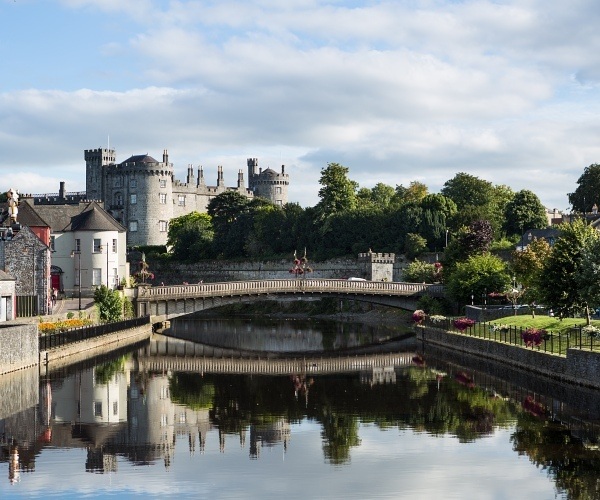
Explore Kilkenny, the medieval capital of Ireland, and immerse yourself in Irish folklore. Built from dark-grey limestone flecked with fossil seashells, Kilkenny is also known as ‘the marble city’. Walk the picturesque ‘Medieval Mile’, a trail running through the center comprising narrow lanes and historic buildings, and discover the city’s fascinating Norman heritage. Today, Kilkenny is one of Ireland’s most cosmopolitan cities – an atmospheric center for arts and crafts, and home to an eclectic mix of fine restaurants, cafes, pubs, and shops.
Learn about the world-famous whiskey

The southernmost and second largest county of Ireland is County Cork, known for its vibrant city streets and referred to by locals as the real capital of Ireland. Discover the history of Jameson whiskey on a private tour of the Jameson Distillery with a brand and whiskey expert. Uncover the secrets of the original distillery, tour their microdistillery and walk through the atmospheric maturation warehouse to take in the aroma of whiskey maturing amid a thousand casks. Learn about the people who worked in the distillery and hear stories of its fascinating 150-year history. Visit the distiller’s cottage, which was home to Midleton’s former master distiller, Barry Crockett, who created the delicious world-renowned whiskey, Midleton Very Rare. Sip a glass of one of their premium whiskeys in the atmospheric and quaint surrounds of the cottage’s sitting room. Finish your immersive experience in the Jameson Bar with the memento of a personalized Jameson hip flask engraved with your name.
Iconic scenery in County Kerry
![]()
Discover true beauty on the Ring of Kerry, considered one of the most breathtaking destinations to explore in Ireland. This 179km circuit of the Iveragh (pronounced eev-raa) Peninsula winds past pristine beaches, medieval ruins, mountains, and loughs, with ever-changing views of the island-dotted Atlantic, particularly between Waterville and Caherdaniel in the peninsula’s southwest.
Set on a 300 acre estate in County Kerry in the south west, the Relais & Chateaux Sheen Falls Lodge is perfectly placed for your Ireland Wild West adventure. Overlooking the picturesque Sheen Falls, this five-star hotel is renowned for its two AA Rosette restaurants and luxurious rooms, suites and villas. Aside from the picturesque views of purple-heather covered mountains, it is also known for its piano jazz ambience, its collection of old Irish whiskeys and exquisite salmon caught in the nearby river.
Encounter Northern Ireland’s only Unesco World Heritage Site

One of the top places to visit in Northern Ireland is the UNESCO-listed Giant’s Causeway in County Antrim, a set of spectacular, 60-million-year-old rock formations jutting out into the thundering Atlantic. Legend has it that they were created by Irish giant Finn MacCool during a battle, whilst science tells us the astonishing basalt columns were formed through the rapid cooling of lava from an underwater volcano. Whether you believe the science or the myth, or a bit of both, to stroll on the Giants Causeway or hop from rock to rock, is to voyage back in time.
By Anna Mascaro
Dream destinations: Singita Private Villa Collection
Singita Private Villa Collection
Set in four countries across Africa, the Singita Private Villa Collection offers comfort and seclusion for guests seeking a wilderness adventure. From the vast plains of the Serengeti and South Africa’s iconic Kruger National Park to Zimbabwe’s rugged sandstone ridges and Rwanda’s majestic Virunga Mountains, the seven private-use lodges include:
- Singita Kataza House, Volcanoes National Park, Rwanda
- Singita Lebombo Villa, Kruger National Park, South Africa
- Singita Castleton, Sabi Sand, South Africa
- Singita Ebony Villa, Sabi Sand, South Africa
- Singita Malilangwe House, Malilangwe, Zimbabwe
- Singita Explore, Serengeti, Tanzania
- Singita Serengeti House, Serengeti, Tanzania
Rocco Forte’s Verdura Resort is splendid resort for isolation in Sicily

If last year is anything to go by, Europe’s islands may be a better bet than the mainland for a quarantine-free holiday this summer. And Sicily, the biggest of all the Mediterranean islands, with its rugged interior and wide beaches, could be the best of all.
Rocco Forte’s Verdura Resort, on the west coast of the island, is just as well set up for natural social distancing. Spread along a 500-acre stretch of private coastline, its spacious villas and well tended gardens are ideal for a post-lockdown retreat.
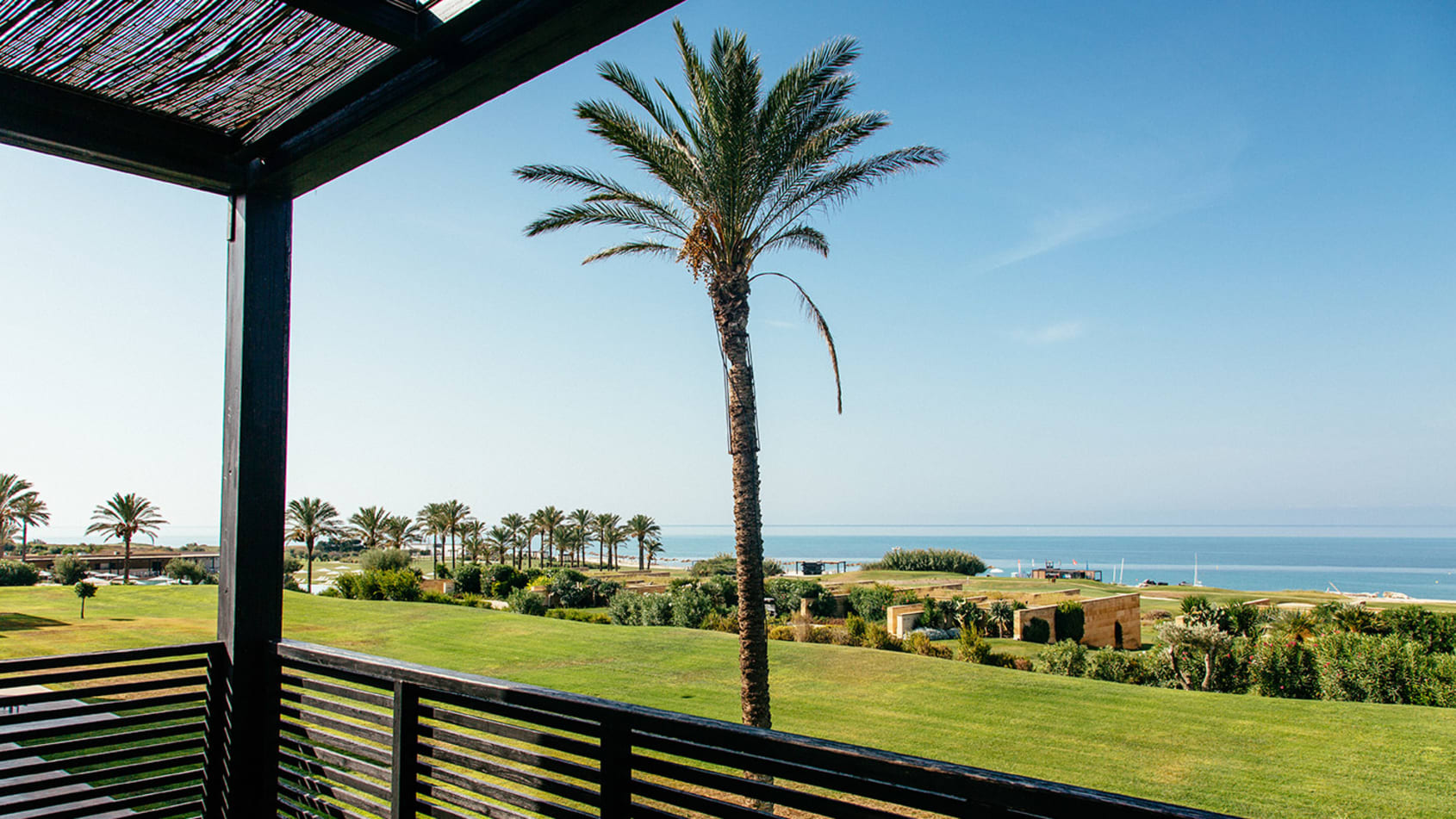
Verdura Resort is a short drive from the Valley of the Temples, Sicily’s foremost archeological site. Despite their name, the seven temples dating from the 6th century BC to the 6th century AD sit not in a valley but on a ridge that runs between the town of Agrigento and the shimmering sea. It is a glorious place to visit in the late afternoon: set aside a few hours to stroll among the ruins as the sun goes down.
The hotel itself also makes the most of its prime location. Its sandstone and stucco-clad rooms all offer direct sea views from their balconies or terraces. Inside, high ceilings and huge bathrooms create a sense of space, while dark timber and light fabric furnishings lend a restful air to the bedrooms.
What to do
Verdura is home to a destination spa, laid out across more than 4,000 square metres and incorporating Finnish and infrared saunas, an indoor lap pool and an outdoor circuit of thalassotherapy pools. The latter, heated to various temperatures and saturated with a range of minerals from the sea and shoreline, are intended to improve your skin tone and ease muscle aches and pains. Potential medical benefits aside, they provide a thoroughly relaxing way to while away an afternoon admiring the orange trees and olive groves of the Sicilian countryside.

Part of the surrounding landscape is given over to two golf courses – an 18-hole championship course and a nine-hole par-3 course – which offer private lessons and clinics for golfers of all abilities. The Junior Golf Academy offers three and five-day introductions to the sport, while more established players can sign up for programmes led by PGA professionals.
Further afield
Beyond the Valley of Temples is a rugged and little-visited stretch of coastline flecked with idyllic and little-visited beaches. Verdura Resort can arrange a guided tour, including lunch, at the wheel of a Porsche Boxster, if you don’t have a supercar of your own.
To the north, the town of Marsala is world-renowned for its fortified wine, and well worth visiting for a tour and tasting at Cantine Florio, one of the foremost producers. Carry on around the coast and you will come first to San Vito Lo Capo, a charming beachside town built around an Arab fort, and then Palermo, the island’s capital. Its medieval streets, Byzantine mosaics and Arab-Norman architecture are a treat for those who like their grandeur with a dose of grit.
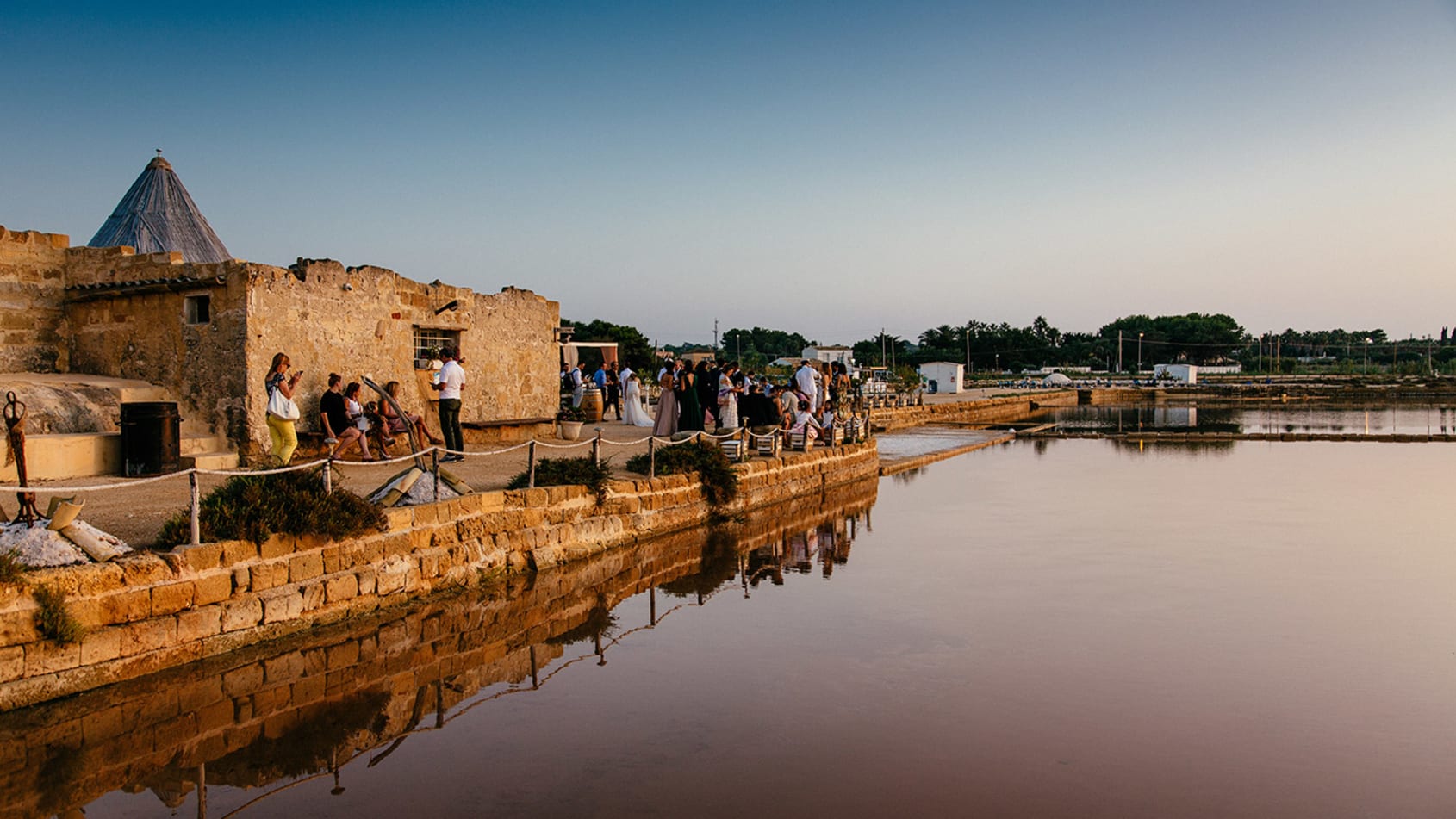
It’s hard to eat badly in Sicily. The island takes pride in its cooking, which turns fresh ingredients into bold, unpretentious flavours. Caponata is a case in point – a rich stew of tomato and aubergine spiked with capers and red wine vinegar. Seafood is also a strong suit, with sardines and red prawns featuring on many menus.
The Verdura Resort’s restaurants are no exception: at rustic Amare, where the tables are all but lapped by the sea, expect a nightly fresh market stand, from which you can select your fish and talk to the chef about how you would like it prepared. Its elegant sister restaurant, Zagara (below), puts equal emphasis on fish, meat and fresh vegetables, some grown in the grounds of the hotel.
How to get there
British Airways, easyJet and Ryanair have direct flights from the UK to Sicily’s two main airports, Palermo and Catania. Palermo is better placed for Verdura Resort.
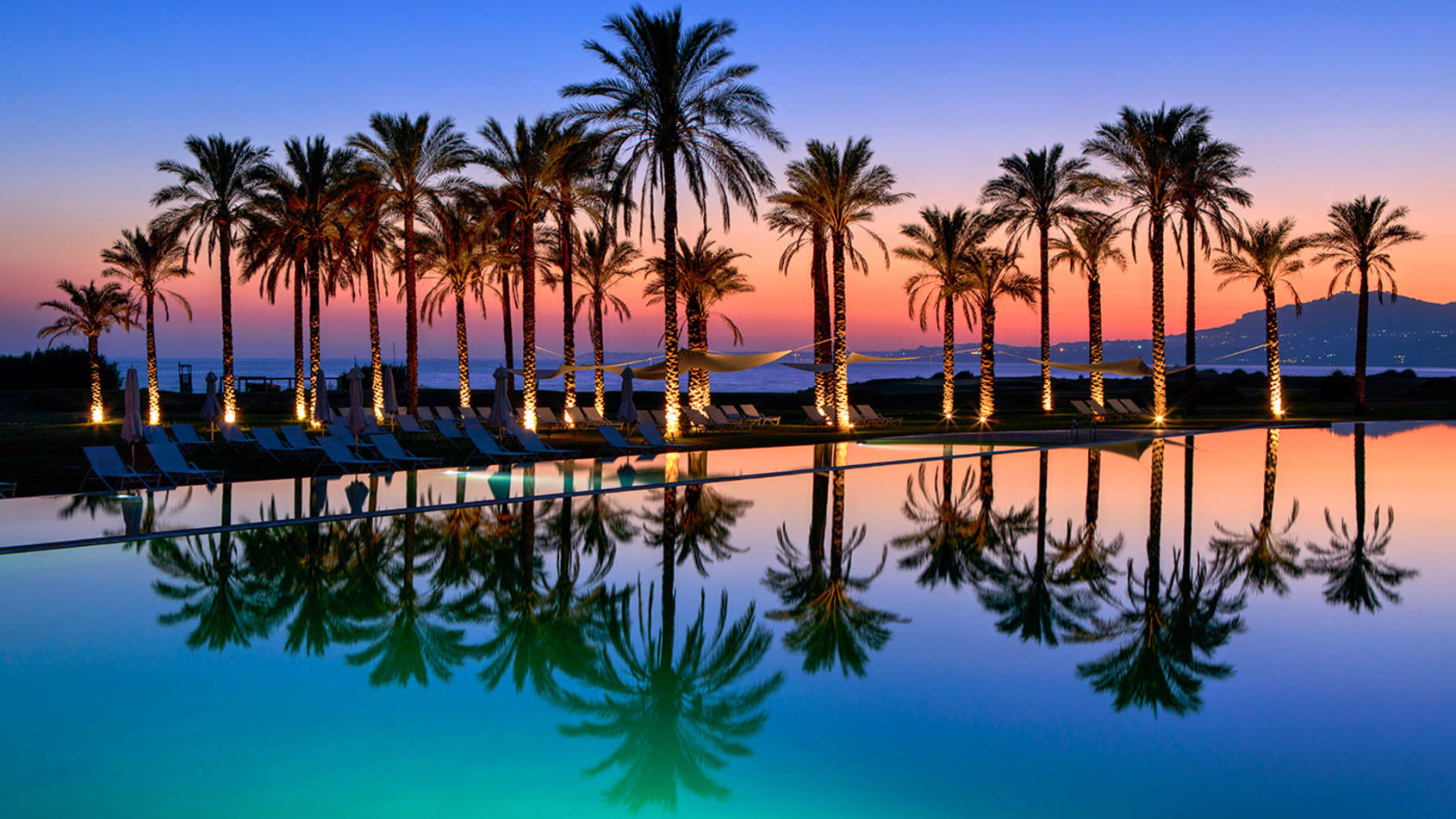
How to book
British Airways Holidays is offering seven nights at Verdura Resort at the end of August from £1,876 per person, including flights from Heathrow. Or book directly on the Rocco Forte website, with rooms starting at about £600 per night.
Contact: www.britishairways.com/en-gb/flights-and-holidays/holidays
By Holden Frith www.theweek.co.uk
Dream destinations: Waldorf Astoria Maldives Private Island
Waldorf Astoria Maldives Ithaafushi – The Private Island
Waldorf Astoria Maldives Ithaafushi has unveiled the largest private island in the archipelagic state. The ultra exclusive destination spans 32,000sqm in the heart of the Indian Ocean and is only a 40-minute journey from Malé on the resort’s Princess yachts or via a 15-minute seaplane flight.
The sprawling estate accommodates 24 guests across two-, three- and four-bedroomed residences, placed across the island’s private beach and overwater. The private island also comes with its own dedicated culinary team.
Dream destinations: The Marilyn Monroe bungalow
Live like Marilyn Monroe at The Beverly Hills Hotel
You can live like a Hollywood star at The Beverly Hills Hotel in Los Angeles. Located on Sunset Boulevard, the five-star Dorchester Collection property is famed for its glitz, glamour and catwalk of famous guests.
To celebrate the relationship with Hollywood’s finest, a number of the hotel’s legendary bungalows have been redesigned to honour past residents such as Howard Hughes, Charlie Chaplin, Elizabeth Taylor and Frank Sinatra.
Bungalow 1’s design incorporates aspects of the life of one of its most iconic guests – Marilyn Monroe. She spent weeks at a time in Bungalow 1, and filmed Let’s Make Love in Bungalows 20 and 21.
The bungalow includes a library of Marilyn Monroe films and books and a Chanel No.5 fragrance bar and bath amenities. Rates start from $9,200 (£6,700) per night.
Great places to discover in Lincolnshire
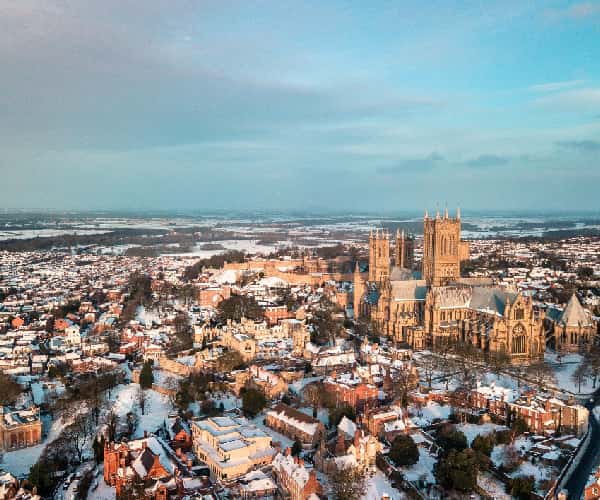
The rich, lush, varied countryside of Lincolnshire is often overlooked when we think about holidays in England, but this ancient and diverse landscape is making a comeback with those who love the quiet and serenity of the outdoors and discovering magnificent English countryside like no other.
Sitting above the royal county of Norfolk, Lincolnshire is an undisturbed corner of the East Midlands brimming with wildlife, history, and culture. Glampers looking for a new area of the UK to stay and explore will be delighted with the wide-ranging activities and breathtaking scenery of this oft-forgotten county, and perhaps it is the fact that it is mostly been undisturbed by tourism that makes this county so special. It’s a landscape that feels timeless, teeming with flourishing species of animals and plants, bordered with a beautiful sandy coastline to the East and dotted with the best examples of British heritage throughout.

The Lincolnshire Wolds
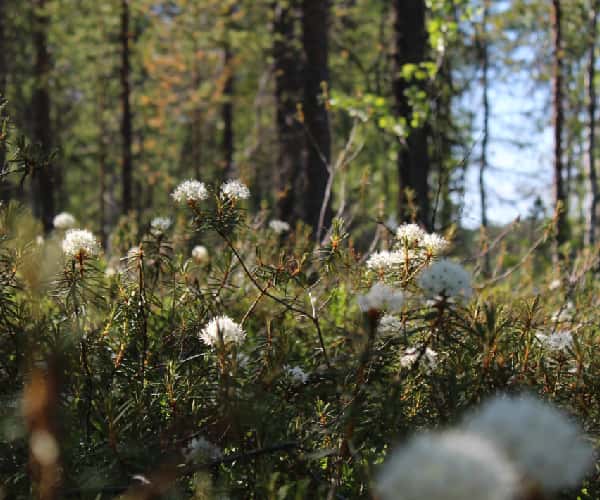
In a landscape well-known for being flat, the Lincolnshire Wolds are a range of hills that run like the county’s curvaceous spine from the Humber Estuary right to the edge of the Fens. This fantastic 216 square mile territory is an Area of Outstanding Natural Beauty, and unlike some untouched, wild AONBs, this landscape is a patchwork of farmed landscapes and small settlements, long barrows, and medieval ruins. Nature enthusiasts will love the open, rural landscapes, filled with red deer and rare flowers, its mixed woodland admired and immortalised by poets such as Tennyson. The Wolds’ cycle paths, walking routes, and bridle paths run like veins across the best-kept secret of Lincolnshire, allowing visitors and locals alike to discover this distinctive landscape in whichever form they choose.
Skegness and its less-known, must-see stretches of coastline

The award-winning beach and traditional seaside town of Skegness sit resplendent on the border between land and the North Sea. This is one of the most well-known spots in the county, with visitors arriving with the completion of the first-ever Butlins in 1936. Now, Skegness is a wonderful example of the classic English seaside resort, with its esplanade receiving a makeover to make it a more upmarket town. For those who prefer their coastline a little more wild and windswept, then Gibraltar Point National Nature Reserve is just to the south of Skegness, and the intertidal habitats that surround the shore make it a Site of Special Scientific Interest. Donna Nook National Nature Reserve to the North of the county boasts more than 10km of sleek sandy beaches which are home to a large colony of grey seals – special viewing areas have been set up to view the pups without disturbing the seals and their feeding times.
Go glamping in one of the six amazing treehouses
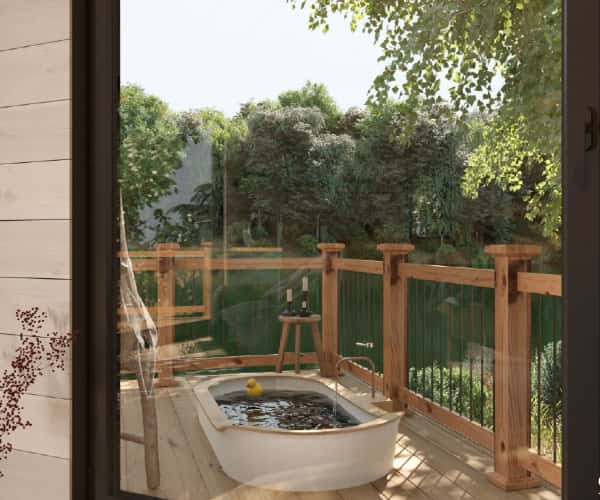
No matter what season, if you’re looking for tranquility and a time for reflection you’ll find just what you need in one of the most unique accommodation experiences in the region; and in one of 6 of these uniquely appointed, luxury treetop boltholes. Your cosy home in the trees offers the ultimate return to nature in one of these eco-chic structures built around private, secluded lakes on the edge of Lincolnshire’s most attractive village, in Woodhall Spa. The chic interiors combine rustic with contemporary providing you with a calm, comfortable self-catering experience. The colour schemes are in warm natural tones, from shades of cream, through to browns, greens, and greys with flashes of contrasting colour here and there.
Big picture windows in the lounge let the warm light flood in and the views over the lake are truly breathtaking. Relax in your own private steaming hot outdoor bathtub, enjoying the subtle sounds of the birds, the bees, and the rustle in the trees. Rustic wooden walls and spacious open plan living, ambient lighting, and a roaring wood-burning stove are just the place to relax after a day exploring or rowing on the lake. Famous for its peaceful and relaxing atmosphere, the unique site at Woodhall Spa, is set on the outskirts of this beautiful, little village, which is close to the Lincolnshire Wolds, and steeped in history. Offering many fine restaurants, cafes’ and individual boutique shops, it makes it the perfect location for a short break or glamping experience with a ‘forward to nature’ appeal.
Visit the windmill capital of the UK
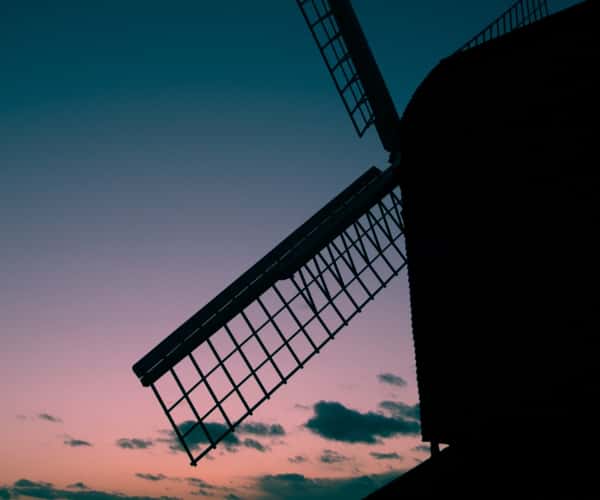
Lincolnshire’s flat landscape and breezy North Sea border made it the ideal spot for harnessing the power of the wind; it is thought that the county once boasted over 500 windmills. Now, just the ruins of 136 windmills remain. Maud Foster Windmill, however, is preserved, and though a private residence now, can be found in the town of Boston and is over 300 years old. In 1988 it was restored to its former working glory and opened to visitors. It has 7 floors with spectacular views over the town and countryside from the top. Other notable mills to visit in the area are Cogglesford Watermill which sits on the stunning riverbank in Sleaford, where you can purchase the organic wholemeal flour that the mill produces or the eight-sailed Victorian windmill at Heckington and its microbrewery providing award-winning beer.
The historic cathedral city and the county town of Lincoln

No trip to Lincolnshire would be complete without a day trip out of the ancient wooded countryside and into the glorious English Gothic streets of Lincoln. This city has been inhabited since the first century BC, with evidence of Iron Age, Roman, Viking, and Norman occupation. The city’s main iconic building is Lincoln Cathedral, rebuilt after the misfortune of a fire followed by an earthquake in 1185 and now a magnificently recognizable feature on Lincoln’s skyscape. Its grandeur and seminalism are seconded only by Lincoln castle, built in 1085 by William the Conqueror. Its presence has reassuringly protected this ancient city for over one thousand years and is home to one of only four remaining original copies of the Magna Carta.
Beyond the official buildings’ precincts, Lincoln’s streets are packed full of a plethora of its history; from half-timbered housing leaning precariously over the river to the 3rd century Newport Arch, a Roman gate, from the tank museum to the medieval Bishop’s palace, Lincoln has something fascinating to offer at every turn.
Heritage trails and great houses

If you’ve chosen to be in the great outdoors, then Lincolnshire has a wealth of trails and gardens, cycling routes, and grounds for you to explore. Doddington Hall is on the edge of Lincoln and is a popular spot for accessing routes such as the George Twigg track, a smooth, winding cycle track through the bucolic countryside. From the lavish Burghley House you are invited to traverse the huge expanse of parklands that surround this heritage site or take the many heritage trails that lead through Lincoln city itself, such as the historic Roman trail or the popular aviation trail.
Finding the Fens
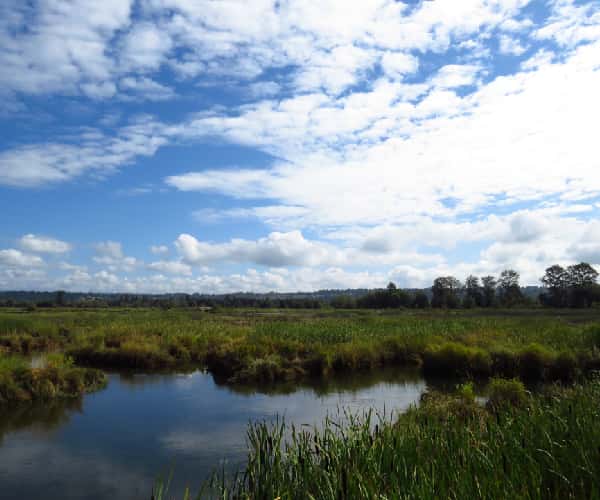
The Lincolnshire Fens are some of the most outstanding wetlands in the UK. This massive expanse of marshland stretched over 1,500 square miles in Lincolnshire and out to nearby Cambridgeshire and Norfolk. The Fenland would originally have been salt-water wetlands, but much of the county’s fens have been drained and now make fantastically fertile arable land – in fact, they contain about half of the grade 1 agricultural land in England. In South Lincolnshire, a project has begun to restore part of the wetland back to its glacial beginnings, uncovering ancient underlying forests in the peat fens and encouraging flora, fauna, and animals to occupy the original habitat. You can still find stunning marshland in the south of the county around Thurbly, Baston and Deeping Fens, with wildfowl and wading birds peeping from the reed beds. This is an area like no other in the UK and walking and driving guides allow you to take in the 4 nature reserves situated within the existing Fens.
Lincolnshire really does have something for every guest – from wetlands to beaches, great houses to windmills, castles, and cathedrals to military museums. Lincolnshire is a delight for all who visit this idyllic, historic landscape.
By Tim Rees
Consider visiting the Niagara region of Ontario this fall

As a local resident of the Niagara Region of Ontario, Canada, I am privileged to experience the wonderful options this region has to offer at every time of year; today, however, I am going to focus on Autumn; or Fall as most residents will refer to this season.
While there are benefits to visiting Niagara in each season, Autumn is my favourite time of year to live here; I believe that if I put myself in the shoes of a traveller I will gain some degree of agreement.
So without further ado, let me present to you my list of “5 reasons you should consider visiting the Niagara Region of Ontario, Canada in Autumn”:
1. The beautiful weather
I am a big fan of summer season; I enjoy boating, swimming pools and going to the beach on a hot summer day. Did you happen to notice a common thread? They all involve water; being on, by or in the water is what I enjoy in the heat of summer and quite frankly it can be uncomfortable to explore all of the activities that Niagara has to offer in the heat of our Southern Ontario summer. Over the past decade or more our summers have been increasingly hot and very humid; we commonly see humidity factors of close to 40C, and on days like that I just want to stay inside where the air is conditioned and comfortable.
In Autumn, however, we enjoy very comfortable weather. Late September through to late October it is not unusual to experience temperatures in the high teens to mid twenties, pair that with very little humidity and it becomes a more enjoyable experience.
2. The colours of Autumn

There is no denying the brilliance of Mother Nature’s Art in many countries; and Niagara, Canada is certainly not an exception to the rule. The colours of Autumn in Niagara can be absolutely breathtaking; there are many places you can view its beauty, whether you love to hike, go sightseeing, visit wineries or many tourist attractions, you will be surrounded by hues of red, yellow, orange and brown in so many lovely shades!
3. It is grape harvest time

Do you like wine? If the answer is yes, you must visit Niagara no matter what the season. Niagara houses over 100 wonderful wineries to explore and world class, award winning wines to taste. What I love about September to October, however, is that it is Harvest Time! In Niagara, Harvest is a big deal, as a matter of fact we have a festival devoted to it, Grape and Wine Festival is one that many locals look forward to year after year.
The pandemic unfortunately put a dampener on this year’s festival, as it did most festivals; but hopefully when it is behind us we can get back to celebrating properly. In non-pandemic years there are many activities planned over a 2 week span. As a matter of fact this is the largest wine festival in Canada! Most grape and wine festival activities are located at historic Montebello Park, which is located in downtown St. Catharines. For those of you who are not familiar, this city is about 15 minutes outside of Niagara Falls and/or Niagara-on-the-Lake, Ontario. Examples of festival activities are parades, outdoor concerts, wine tasting booths, and several wineries participate in our “Discovery Pass” event; a food and wine pairing experience.
Speaking of winery tours, there are several companies that you may book a tour with so that you can explore our wineries in style without having to worry about just how much “tasting” you have done.
4. It is less crowded

Once the Labour Day holiday has come and gone in Niagara, we begin to see a few less people gathering; children have returned to school and teachers have returned to work contributing to smaller crowds compared to the prime Summer vacation months of June, July and August. If you want to be able to get that perfect view of the Falls without other people in your way, I suggest you take advantage of travelling in the Fall; most especially later in October when the temperatures drop and less people are venturing outside.
5. Better prices and availability

There are many choices of where to stay in Niagara Falls or Niagara-on-the-Lake and the surrounding area, however, when you book your stay in the shoulder season of Autumn there will most likely be better availability and more “bang for your buck”! If you are a luxury traveller like I am, you can upgrade to a better category of room or stay in a more luxurious hotel for less money than it would have cost you in July; and lets face it, we all like saving money right?
Attraction prices may be slightly less expensive; and even if they are not, you are more likely to find availability for your “must do” activities.
In conclusion, I hope I have given you reason to consider your vacation to our beautiful region in Autumn. As a local travel agent specializing in custom itineraries of Niagara and am ambassador of Niagara Falls, Canada, I do hope to welcome you to enjoy it personally in future. For now, stay safe and well.
By Lisa Mallett
Explore Provence on a road trip

A road trip around Provence might be the perfect option for our pandemic times. Find your own space while experiencing all the luxury and beauty of the region.
And yet, a road trip in a campervan through the many landscapes of Provence feels like a perfect trip even in the best of times. You may want to see the lowlands with the birds, the mountains with the lavender fields or the coast with the beautiful coves. You do not have to compromise and choose between the vineyards or the beach, the small boutique shops or the farmer’s markets.
By travelling the roads of the region, you also see the stunning landscape from the viewpoint of a local. You can wake up to the sunrise in one place and experience the sunset in another. You have the freedom to travel where your heart desires – and let’s face it – there is much that it will desire in this stunning region of France.
Here we offer a suggested road route through Provence that will bring so much joy.
L’Isle-Sur-la-Sorgue
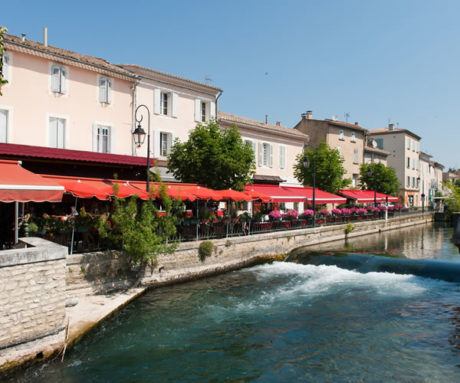
Starting some 25km east of Avignon, the provincial town of L’Isle-Sur-la-Sorgue is a beautiful place to begin your tour. It is known as the Venice of Provence, as the city is essentially an island surrounded by the river. There are many bridges, some private, but the public ones will lead you to the quaint old town.
As you travel on from the town, heading south, you may want to time your road trip to the time of the flowering of the lavender. The expanse of purple flowers of the region is a significant driver for most to come to Provence. The bloom happens between June and August, though the timing depends on the weather. If the weather is warm in spring, you will want to make this road trip through Provence earlier.

However, a reason to head to the mountain region is the lure of real lavender grows in hidden spaces amongst the rocks. While this real lavender is rare, if you are going to be a purest in your road trip, you need to look above 600 meters for genuine plants.
The villages of Luberon
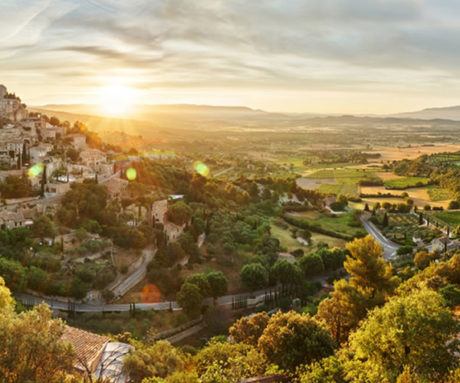
From the tourist town of L’Isle-Sur-la-Sorgue, with its many restaurants, wineries and museums, you should head to the mountain villages of Provence. The Luberon is a mountain range to the south of the Vaucluse Departement. While you will have to master French to order your food from the local shops, you will also be lost in quintessential Provence. The villages of Luberon are filled with vineyards, olive groves, small stone houses and lavender fields.
Gordes should be your first stop, at least for lunch. It is one of the most tourist-inhabited villages in the area and can get crowded and full of stalls with inauthentic gifts. However, the views are stunning and walking the old town’s streets makes it worth a stop-off.
Roussillon is also worth visiting to see the sunshine on the red rocks. Time your road trip through the area just right and you will be astonished by the vista.
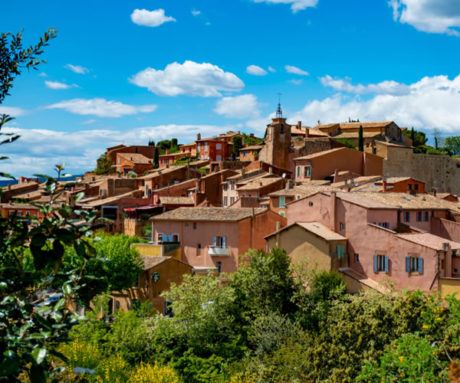
Continue south towards Saint-Saturnin-Les-Apt and onward to the village of Saignon. Again, it is a beautiful view, of course, and it is worth finding yourself a spot to stop and sleep and raise to the early morning light. Then, hit the road early and look to be at Lourmarin as the sun sets the silhouette of the village on the mountainside is enough to soothe any troubled soul.
Secret coves of the coast
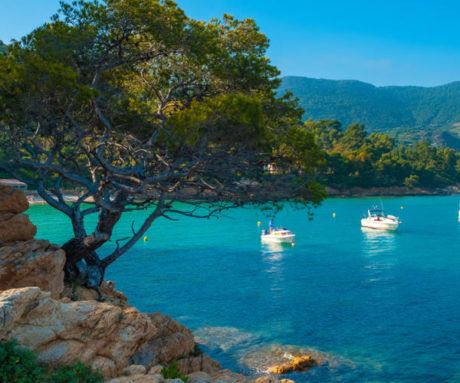
From the mountains, you should then travel further south to take in the coast. The beautiful views and great food continue, but Provence’s coastal area offers the change to hike and swim in hidden gem coves far from the crowds. While there are obvious tourist honeypots on Provence’s coast, there is no need to end your road trip amongst these crowds.
Start this section of your trip in the pine forest of Bormes-Les-Mimosas. Pellegrin beach is a long strip of sand border by pine trees. The sea is a deep green. Despite all this appeal, the secret of this coastline has yet to spread. On the horizon is the island of Porquerolles and there is no better way to spend your time than taking the coastal path to Fort Breganon. This 3-hour round trip will give you a chance to soak in the sun and find occasional shade.
If you love these fragrant pines, you can head to Le Lavandou. You will delight in the cicadas and the white sand. The sea is a vibrant blue, and you can find some solitude on Jean Blanc Beach, which is a delicious inlet. From here you can head up to the coast path that stretches from Lavandou and Cavaliere. At the end of this walk in the wild cove of the Elephant, with its green waters and rocks.
By Su Stephens
Beautiful historic English hotels
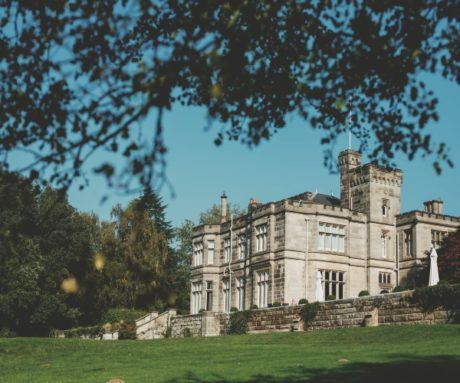
Across England‘s green and pleasant land dozens of historic hotels reveal chapters of the nation’s rich and often turbulent history. Over the last century many grand country houses have been saved from ruin and reborn as luxurious hotels.
Once these houses were the zealously guarded bastions of the aristocracy, not that every one of these houses was once a family home. Today, these hotels and their superb restaurants offer a warm welcome to those who wish to escape from frenetic life into more leisurely times.
Stanbrook Abbey Hotel, Worcester
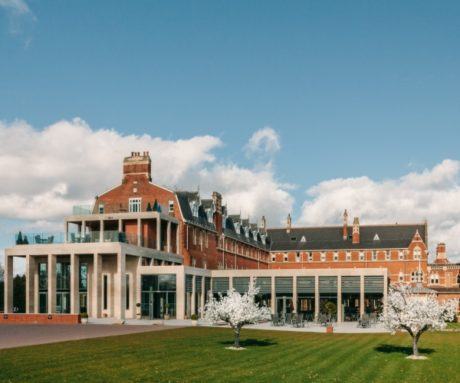
Stanbrook Abbey Hotel, a former Benedictine Abbey, with architectural hints of the Houses of Parliament, is a slice of English history that has been transformed into a luxurious country retreat. In the peaceful chapel, grooves are worn into the titles were nuns knelt to pray to the glory of God, as they had since the 19th century.
It’s worth taking the 145 steps of a spiralling stairway to the top of the 100 foot Bell Tower to look out over Worcestershire’s patchwork of fields and hills.
Once the Pope had deconsecrated the Abbey, after the nuns had relocated to Yorkshire for greater peace, Handpicked Hotels undertook a remarkable £4.2 m transformation, with a tall contemporary addition housing reception and a vast bar.

Yet, history is celebrated with the feature bedrooms commemorating the craftsmen who contributed to the Abbey’s original glory: Ashton, Boulton, Pugin and Thompson. Look out for the woodwork of Robert “Mousemen” Thompson who incorporated mice into his carvings.
The Swan Hotel and Spa, Newby Bridge
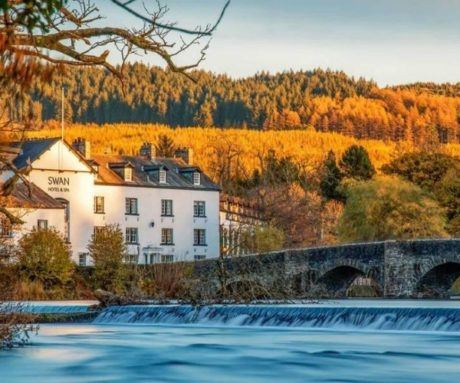
Since 1651, the Swan Hotel, initially a coaching inn, has looked out over the picturesque five arches of a single-track bridge across the river that flows into the southern tip of Lake Windermere.
Just fifteen minutes from the M6, The Swan Hotel, with its riverside weeping willows and lacy white wrought-iron garden furniture, makes for a stylish gateway to the Lake District.
Featuring a marina, spa, indoor swimming pool, adventure playground and nature trail The Swan is a destination for all the family.

The Cygnature Restaurant, daringly decorated with cerise banquettes and filament-raw dangling lighting, provides many local specialities, including Morecambe Bay potted shrimps, a local take on chorizo and sticky toffee pudding.
Homewood Hotel and Spa, Bath

Long ago, the Romans brought art, civilisation, Mediterranean living and indulgent bathing to Bath. Centuries on from the Romans, Homewood, just south of Bath and overlooking the bucolic Avon Valley again brings all of these – plus chic contemporary style – to this Cotswold stone house, portions of which date back to a 13th century Carthusian monastery.
With a fire-place and patio heaters, sheltered by soaring trees, the Olio Terrace extends the British spring and autumn for al fresco breakfast, lunch and dinner. While the pool and hot-tub also bring a Mediterranean aura to Bath.
Tapas menus contribute to the Mediterranean vibe too: family and friends share small plates such as chilli squid, griddled prawns and chorizo scotch egg. Salmon, chicken and steaks can either be cooked robata, plancha or skillet. Guests, casually but stylishly dressed, love the sophisticated Ottolenghi-style salads: think caponata, pine nuts, red wine vinegar and bulgur wheat.

Ian Taylor, the owner, is an art aficionado: don’t miss Reception’s clock collection or the atmosphere black-and-white 1970s photographic portraits of musician Peter Gabriel, displayed beneath the diverse chandeliers of the dining room.
Middlethorpe Hall Hotel and Spa, York

If, at this red-brick and white-sash windowed house, built in 1699, you feel that you are living in a National Trust House your senses are not deceived.
Middlethorpe Hall sits on the outskirts of York and its attractions of the Minster, the Shambles and a trip into Viking days. Yet, guests often slip into England’s rich history, forgetting the outside world, when staying at this elegant property run by Historic House Hotels and owned by the National Trust.
Guests relax amongst the dark wood bureaux, gilded mirrors, countless side tables and in some rooms – four poster beds historically dressed with sheets, blankets and eiderdown.
A National Trust leaflet guides walkers around the 20 acres of trees planted centuries ago, lake with pike and perch, croquet lawn and walled garden. Coffee, lunch, afternoon tea and pre-dinner drinks can all be taken on the flagstone terrace looking across the striped lawn and onto the parkland.

Increasingly, the AA two rosette restaurant, with original 1699 wood panelling, looks to source from local suppliers of fish, game and meat. Also, home-grown produce from the Walled Garden is appearing more and more on the menu.
Hampton Manor, Hampton-in-Arden

Finally, within 45 acres of Hampton-upon-Arden, once a green swathe of Shakespeare’s Forest of Arden, Hampton Manor looks both to the past and the future.
Another Neo-Gothic country house, this time built by Frederick Peel son of once Prime Minister Robert Peel, revives the spirit of the country house stay with two night breaks. A tasting menu in the Michelin-starred restaurant is at the heart of the experience, though another dinner served in “Smoke”, a greenhouse, magically transformed into a unique restaurant, is a memorable experience.
Guests may arrive as strangers but a Hampton stay is a sociable event as people bond, if they wish, over pre-dinner cocktails, roasting marshmallows after dinner by the fire pit, whisky tasting, a bread-making course, wine tasting and a tour of the walled gardens.
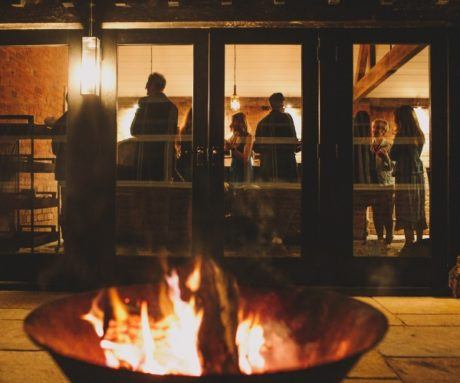
The Hill family, who run Hampton Manor, have a vision of organic and regenerative farming where waste is minimised. So the “Wasted” gin in the bar is distilled from recycled coffee beans. Typically a silky carrot soup from carrots grown just yards away is accompanied by an inventive pesto of carrot tops – which otherwise would have been wasted. Wherever possible, the Hampton Manor kitchen adheres to its guiding principle: “nothing added, nothing taken away.”
By Michael Edwards
Discovering Brescia in the Lombardy Region
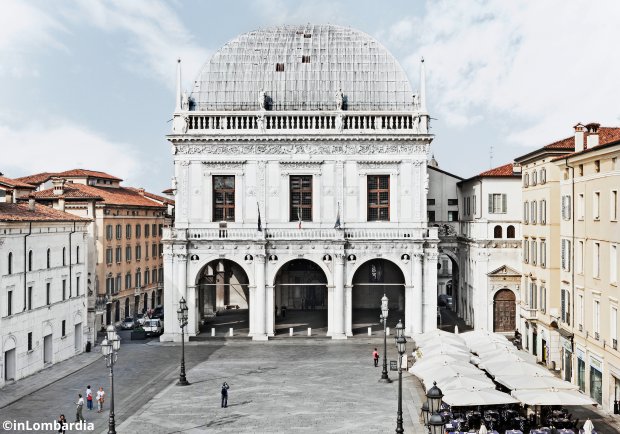
A Lombard monastery transformed UNESCO Site. A city now without walls lived in the streets, passing from an aperitif to a local gelato. Stick around for the roar of the Mille Miglia.
The ancient Brixia Romana puts on a contemporary face. September’s Festa dell’Opera brings the melodramma, filling the local courtyards, restaurants, and factories with music. Nearby, the wine flows along with the time while sipping on glasses of Franciacorta’s finest or the pirlo, a popular local aperitif made by mixing a still white wine and Campari. Elegant and always leaning towards the innovative, it’s here you’ll find the original Zone Diet gelato or a book detailing the local wine/gelato pairings. The city’s pride and joy, the Santa Giulia Museum, is a monastic complex included in the 2011 UNESCO World Heritage Site: The Longobards and Their Places of Power.
Get lost among the Renaissance cloisters, the Basilica of San Salvatore, and the Romanesque Oratory of Santa Maria in Solario with its star-studded dome, leaving the best for last. Exceptional Roman ruins depict lobsters, pomegranates, and theatrical masks that come to life through vibrant mosaics and frescoes.

Connecting the past and present, the Mille Miglia classic car race weaves its way through Italy from Brescia to capital of Rome and back in the month of May. This is one round-trip you won’t want to miss.
Harbour hopping on a French Riviera in a luxury yacht

There’s no better way to travel along the South of France during the summer months than by luxury yacht charter, as famous stars from the world over can attest. The French Riviera comes alive with concerts, festivals and so much more from May through to September, so get straight to the heart of each and every city to be the first to arrive and the last to leave.
Pack only once when your spacious en-suite accommodation is with you for the whole of the journey, along with a professional crew for first-class service and a selection of water toys that you can use for as long as you like, wherever you travel. A week-long itinerary will give you plenty of opportunities to experience the highlights of the Cote d’Azur, and here are some choice recommendations for culture, fine dining and entertainment to make a truly fulfilling escape.
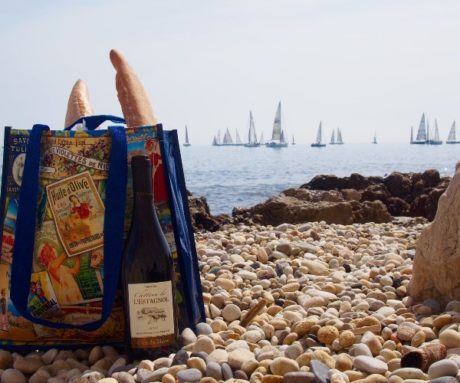
Saint Tropez
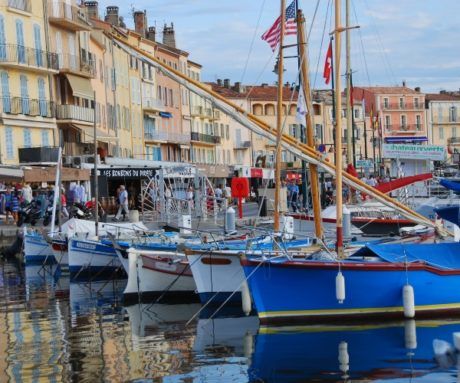
Summer in the South of France is all about the beaches and celebrating life at its zenith, and Saint-Tropez is the perfect place for both. Show off your beach-ready body on Pampelonne Beach and savour the warm shallow waters for a relaxing dip. The coast has some of the most exclusive restaurants and bars in the region and they will keep you refreshed and well-fed throughout the afternoon through to sunset.
The quaint old town surrounding the harbour has plenty to capture your attention on a gentle stroll, particularly since artists still flock here to capture its charms. La Citadelle de Saint-Tropez is arguably the highlight of a daytime tour; combining fort, museum and scenic observation point, before night clubs such as Les Caves du Roy put on a night to remember with world-class DJs.
Cannes
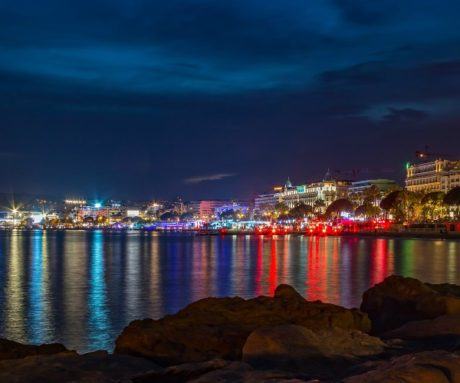
Cannes is the place to be during the summer yacht charter season, and celebrities the world overcome to show off the latest fashions on the red carpet at the Cannes Film Festival in May. Concerts and galas fill the weeks to follow, accompanying the traditional nightlife the city has to entice you ashore. Dress to impress from the incredible array of boutiques and designer brands in town, and visit Le Suquet just a short walk west of the port to delve into the art and history of Cannes in centuries past.
Leave the rest of the world behind on your luxury yacht and head to the Îles de Lérins for sunbathing and water sports in complete privacy and without care: Your Captain can have you back at the marina in time for the next unmissable evening event.
Antibes
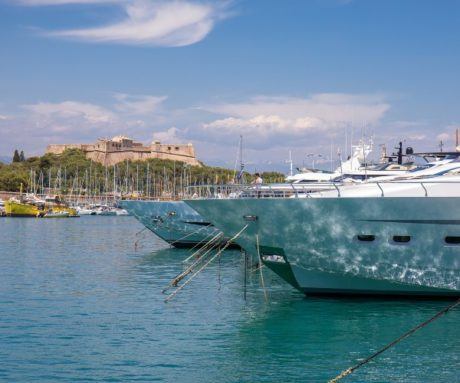
Antibes is a sprawling metropolis just a short cruise from Cannes, and its main attraction is Musée Picasso alongside the 18th Century Antibes Cathedral. Those working up a thirst will want to visit the Musée de l’Absinthe just across the road for a tipple of the famous green drink. The surrounding cafes and restaurants offer far more substantial fare, which can be worn off with a walk north along the seafront to the unusual star-shaped Le Fort Carré and its commanding views.
The Cap d’Antibes has a few choice anchorages to escape the crowds for sunbathing and snorkelling in peace and boasts golden sand beaches to the west and east.
Nice & Villefranche-sur-Mer
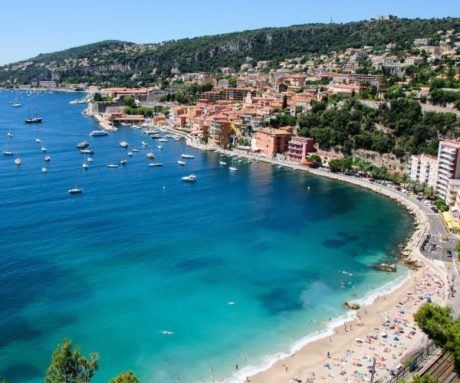
Centuries of summer tourists have left Nice with a rich heritage when it comes to architecture and art, a whirlwind tour of which you can receive in Vieux Nice (‘Old Nice’) beside the harbour. Cathedrals and churches intermingle with pastel-coloured houses and shops down narrow streets, and the 17th Century baroque palace Musée du Palais Lascaris is nestled amongst them. In the more modern parts of Nice famous artists, Marc Chagall and Henri Matisse also receive their dues with museums dedicated to their life and work. Find a calmer side of the city at the impressive Cimiez Monastery where Matisse is buried, or cruise east to Villefranche-sur-Mer for quieter beaches, traditional restaurants and scenic views of the bay.
Monaco
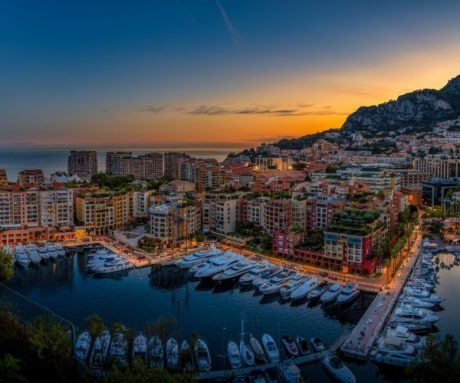
The Principality of Monaco is a great destination to begin or end your summer yacht charter in style: The Monaco Grand Prix takes place in May and your berth in Port Hercule might provide you with a view of the track, so you can dine and spectate at the same time.
Pack the daylight hours with indulgent shopping and spa treatments in town, tour the galleries and museums to satisfy the senses, and end with an evening together in one of the Michelin-starred restaurants such as the impeccable Louis XV. The night needn’t end there – the Casino de Monte-Carlo offers more than thrills at the gambling tables with concerts, shows and other events filling its theatres throughout the Summer.
Great European rail journeys
While you can go on a great train trip in many places around the world (including right here at home), the romance of the rails is at its most alluring in Europe.
I’ve been taking European rail journeys for 15 years now—often using a Eurail pass—and the magic of stepping into a grand train station, scanning the departures sign full of enthralling names and hopping aboard followed by gazing out the window at astounding scenery has never waned.
What follows is just a small sample of Europe’s most exciting rail adventures to talk about with your travel advisor. Some of these trips are short-but-scenic services; some are longer treks between two big cities that offer a dramatic change in landscape or culture; some sit somewhere in between. All of these journeys will add a touch of enchantment to any European trip and may end up leaving as much of a lasting memory as the destinations themselves. And since Europe is re-opening to travel more and more each day, they are once again within reach.

